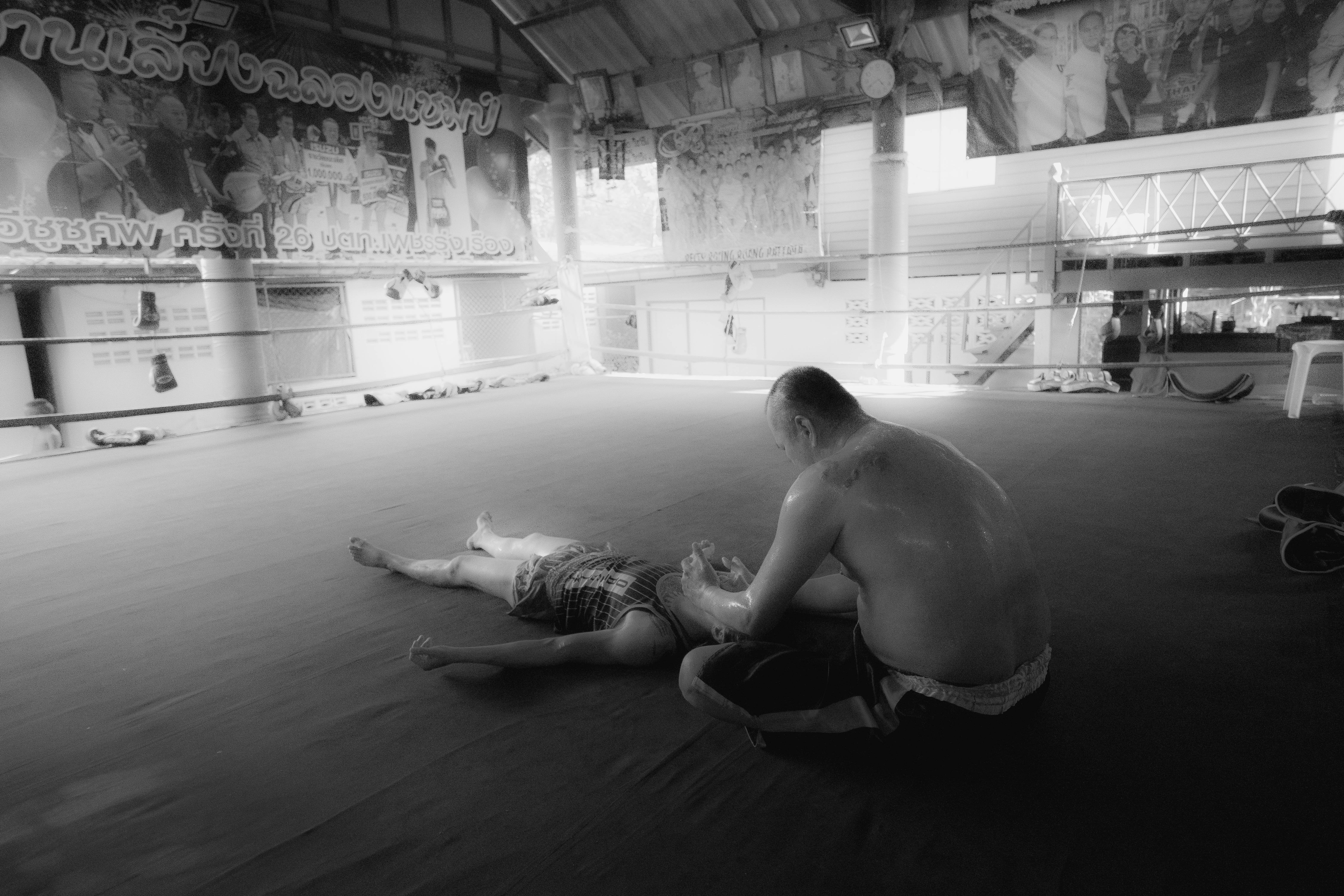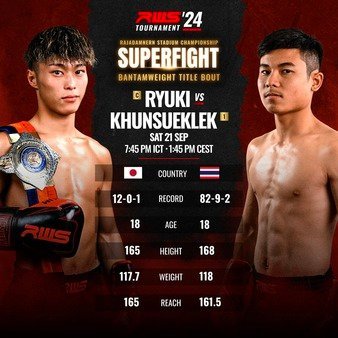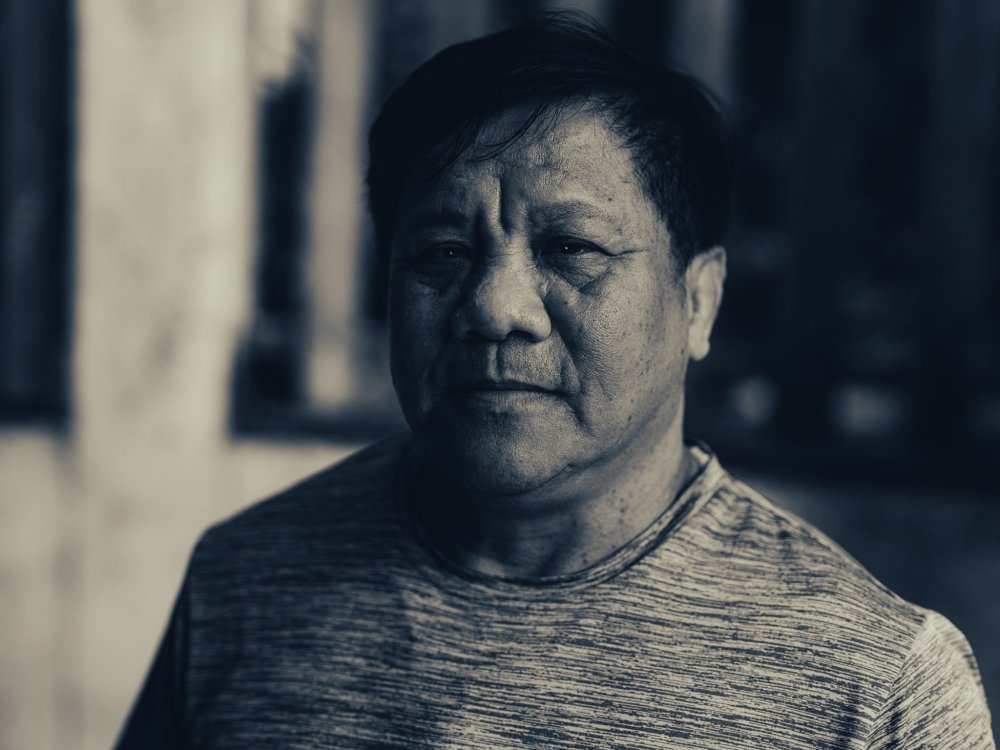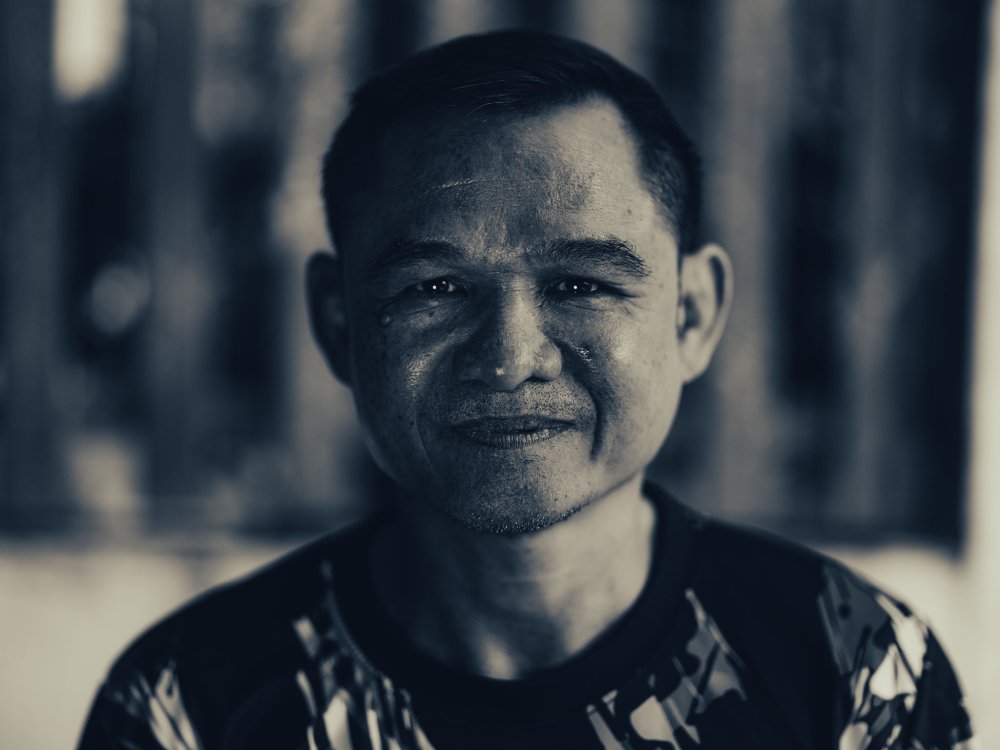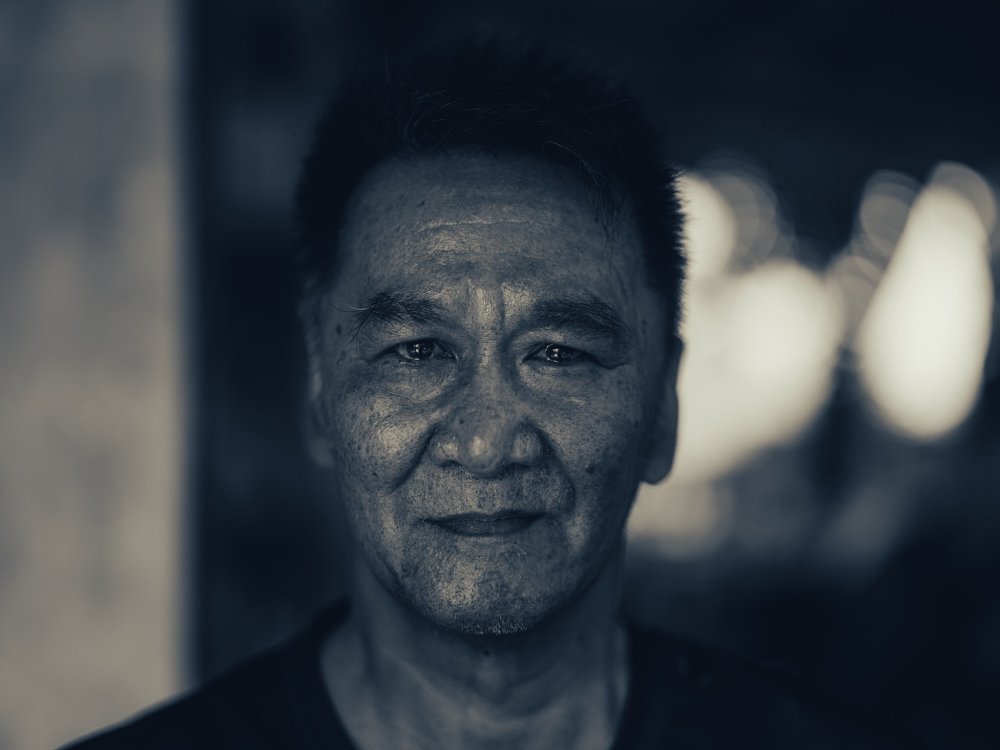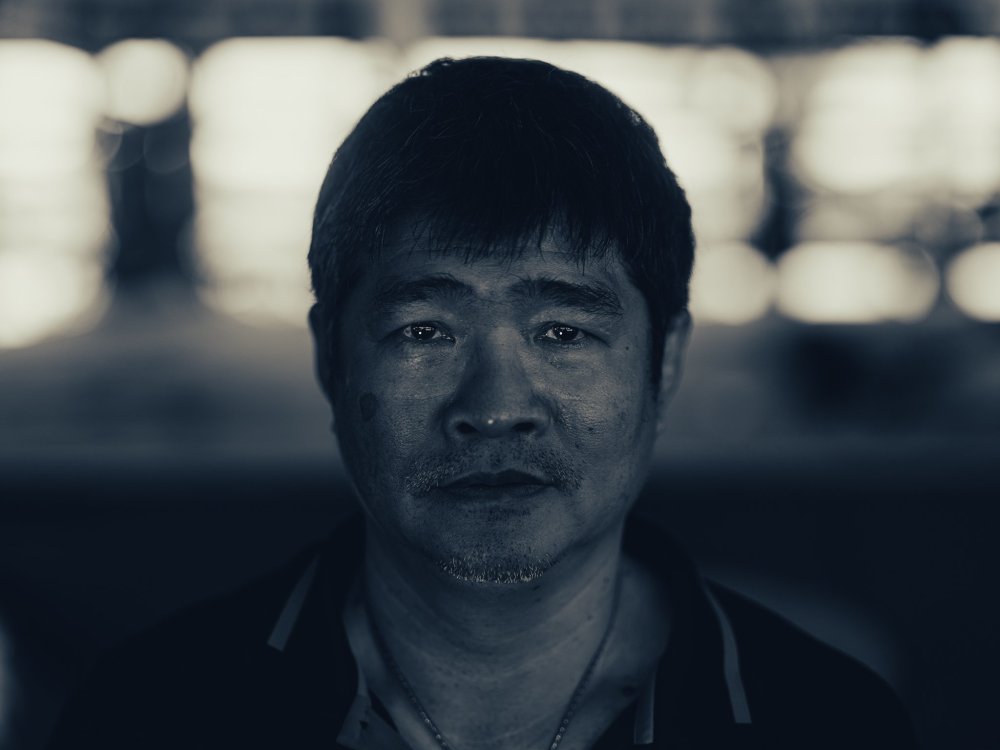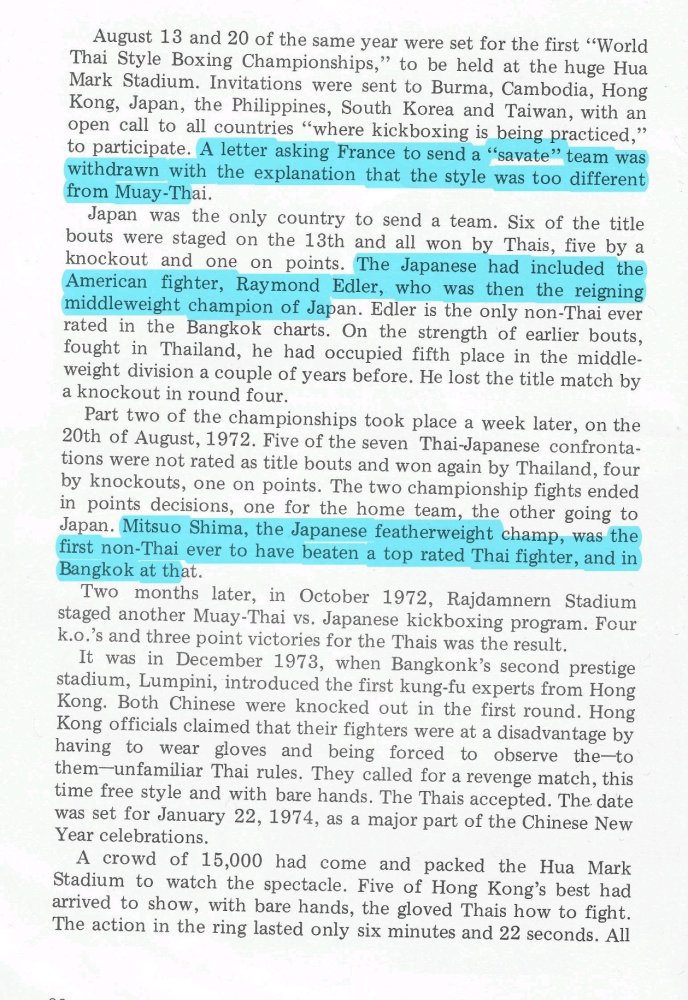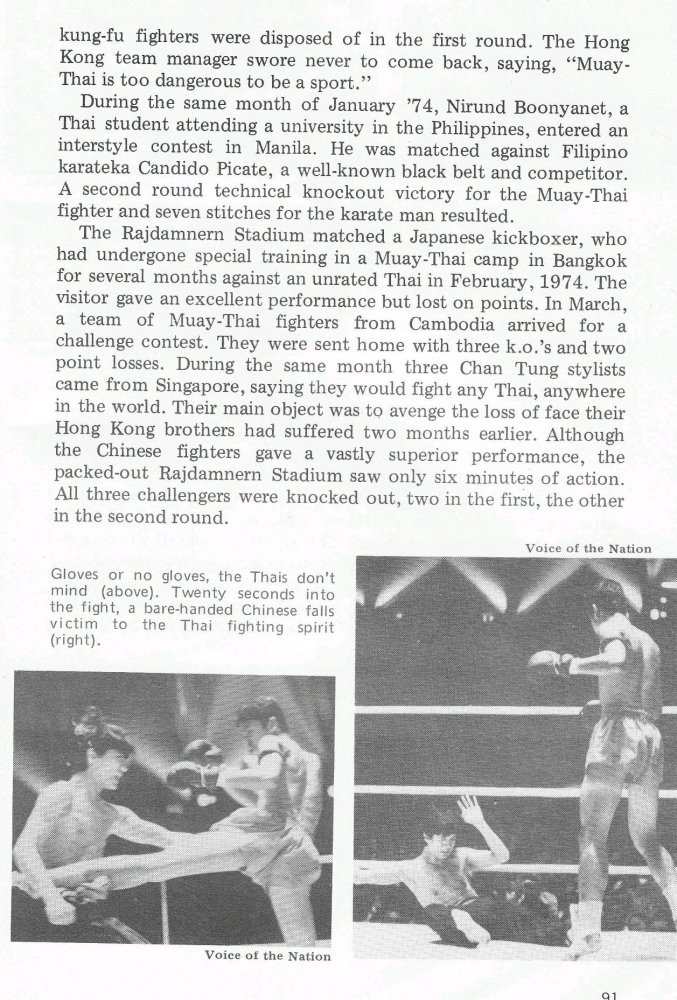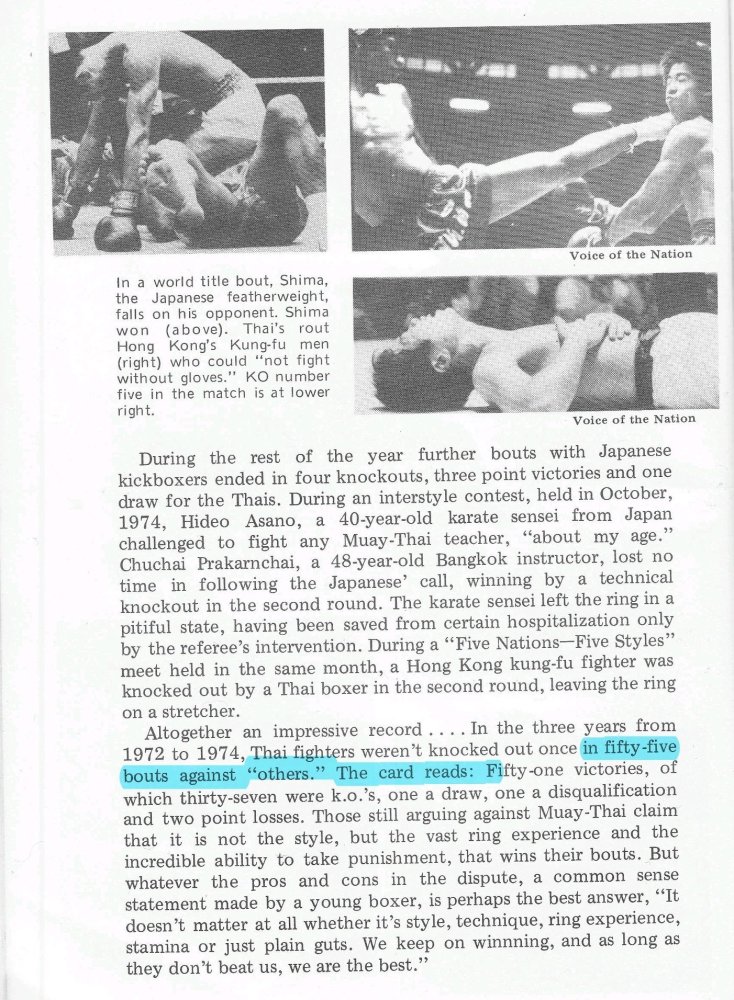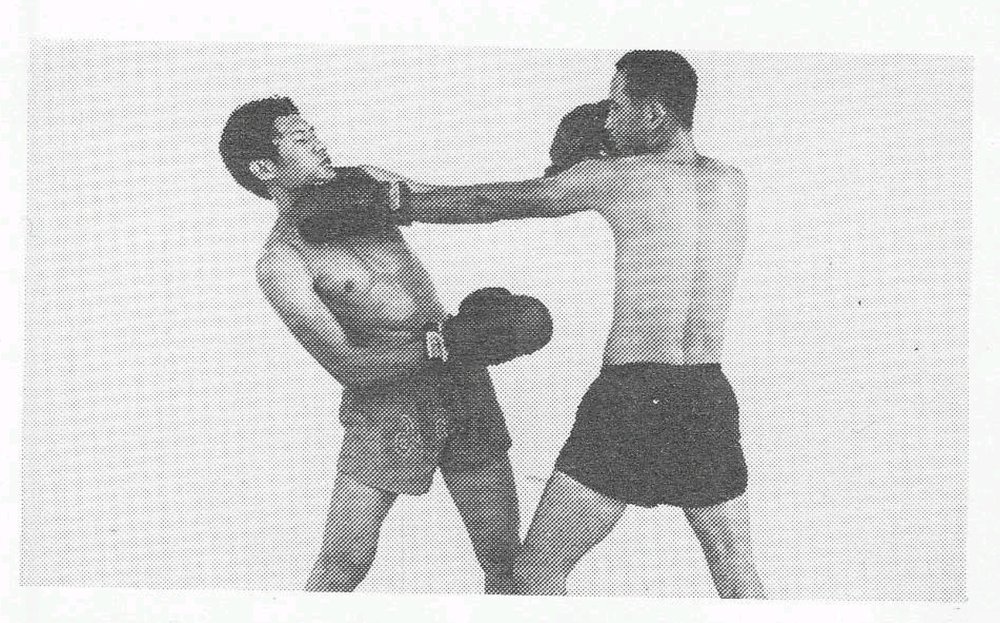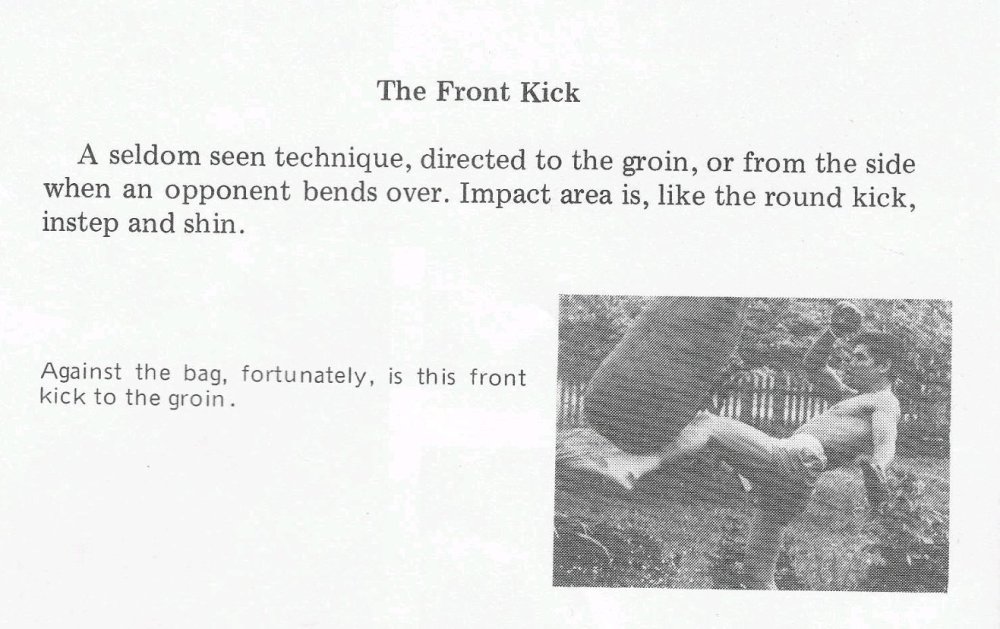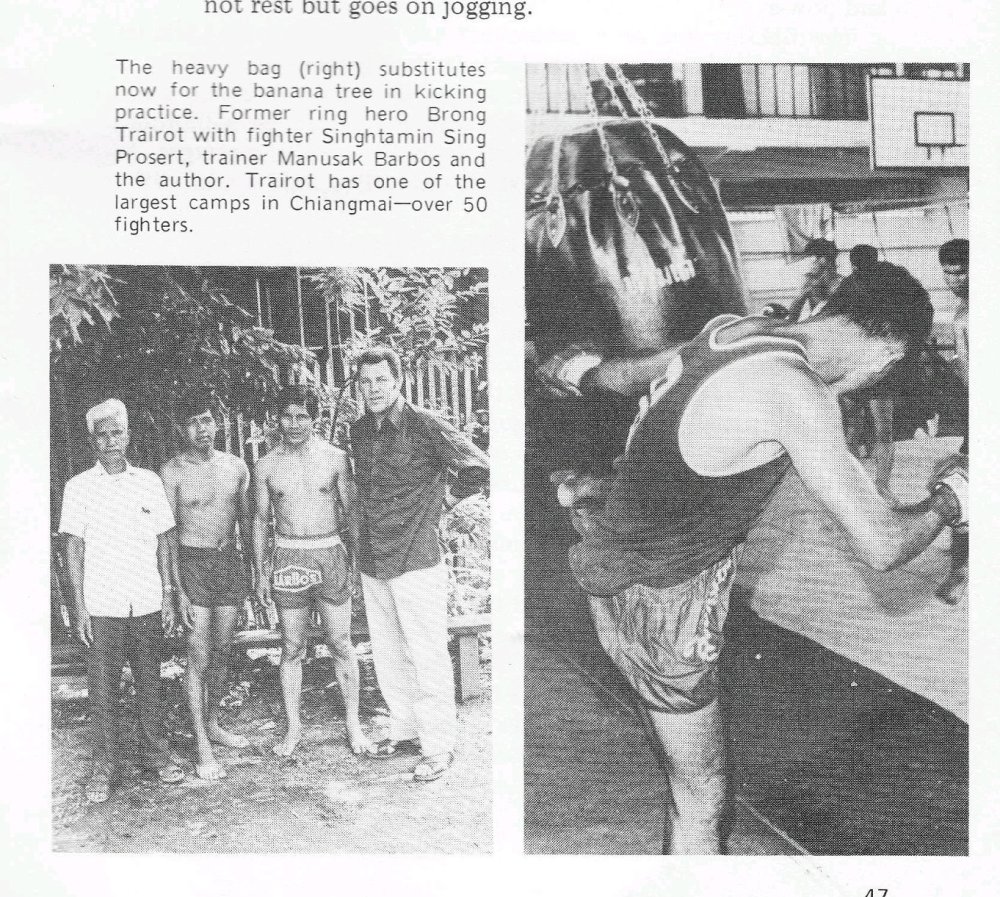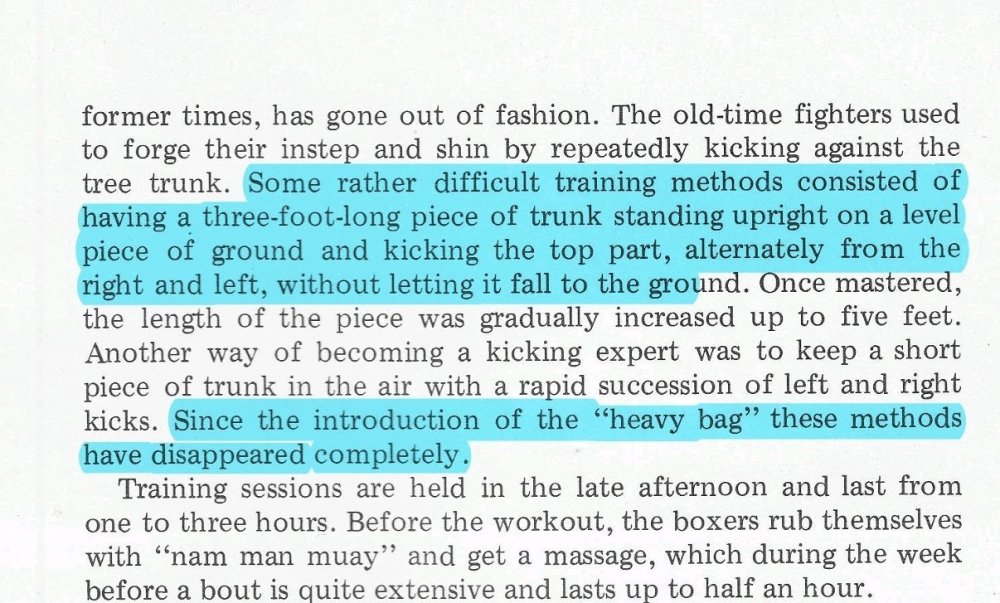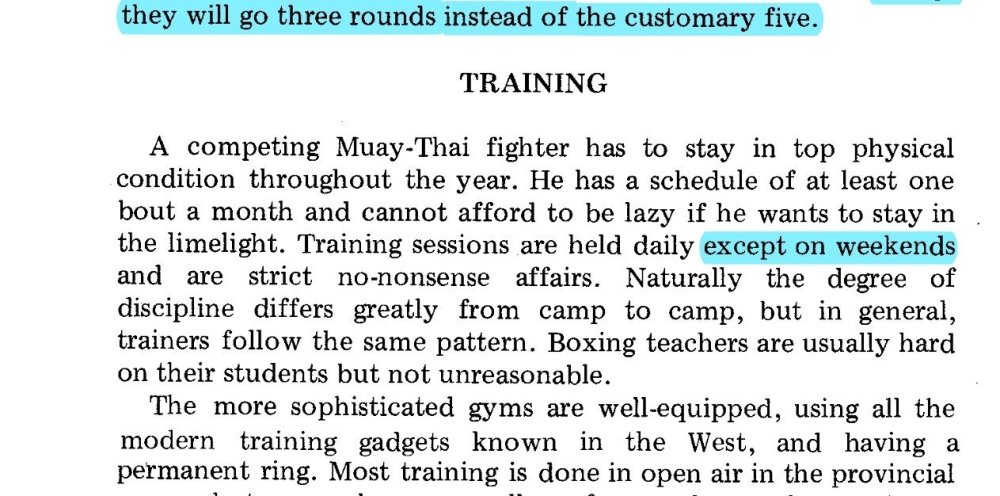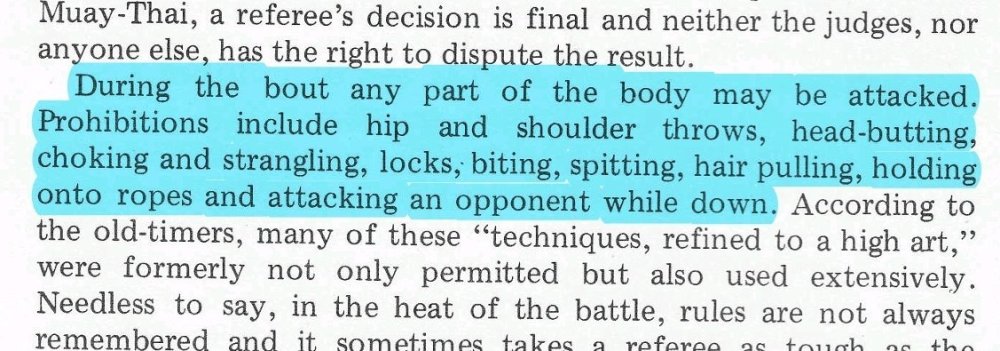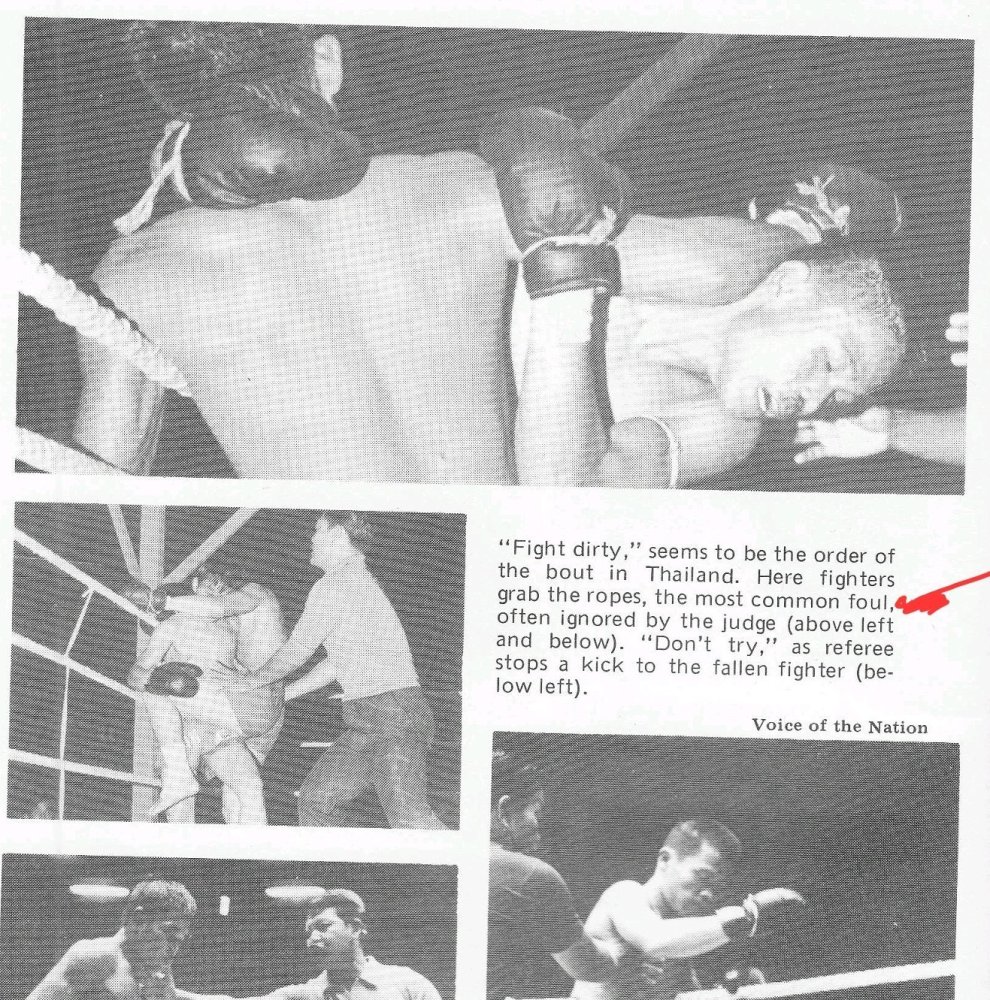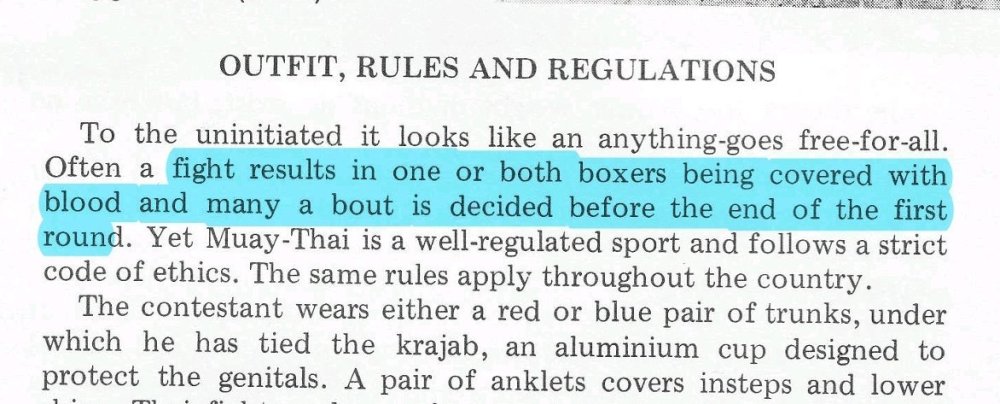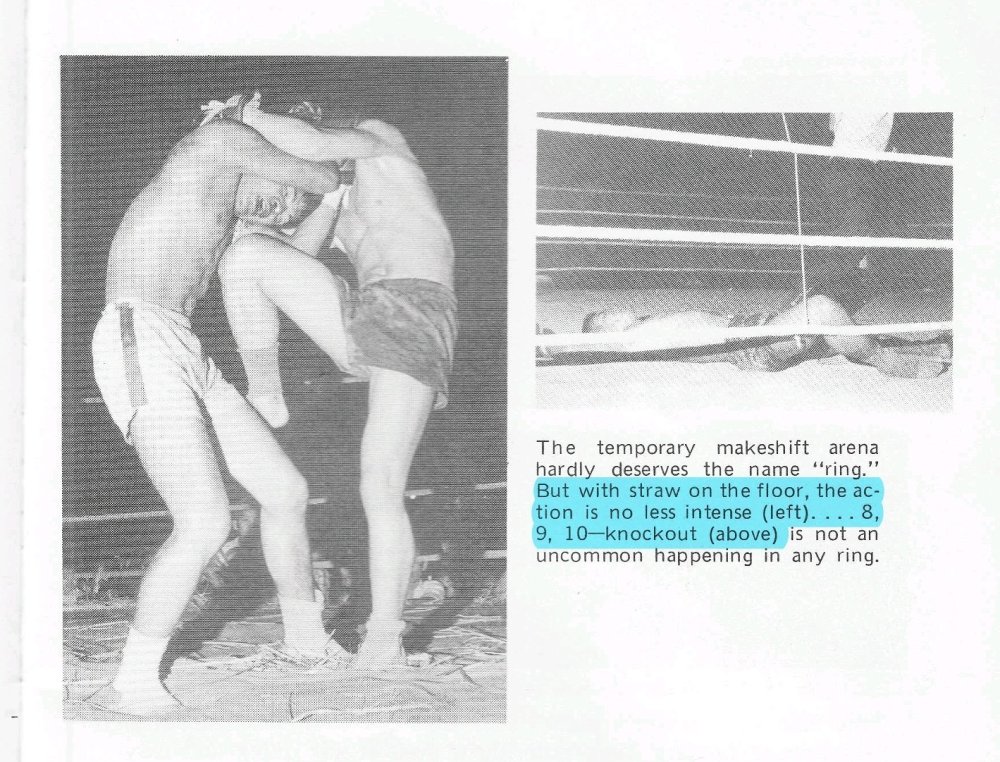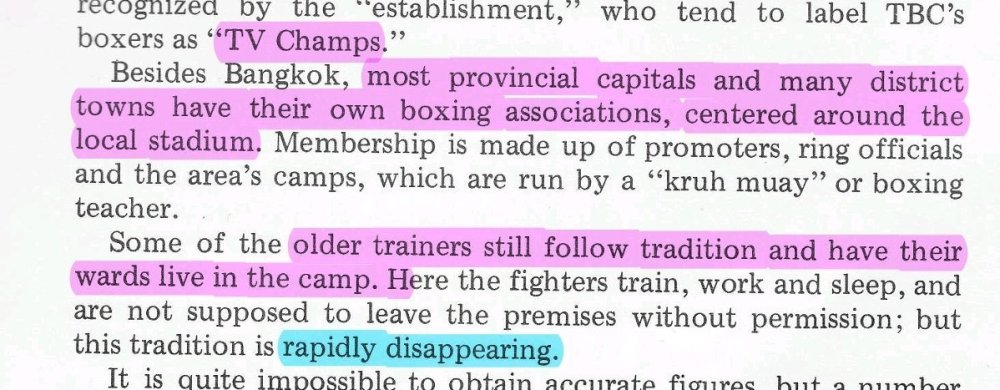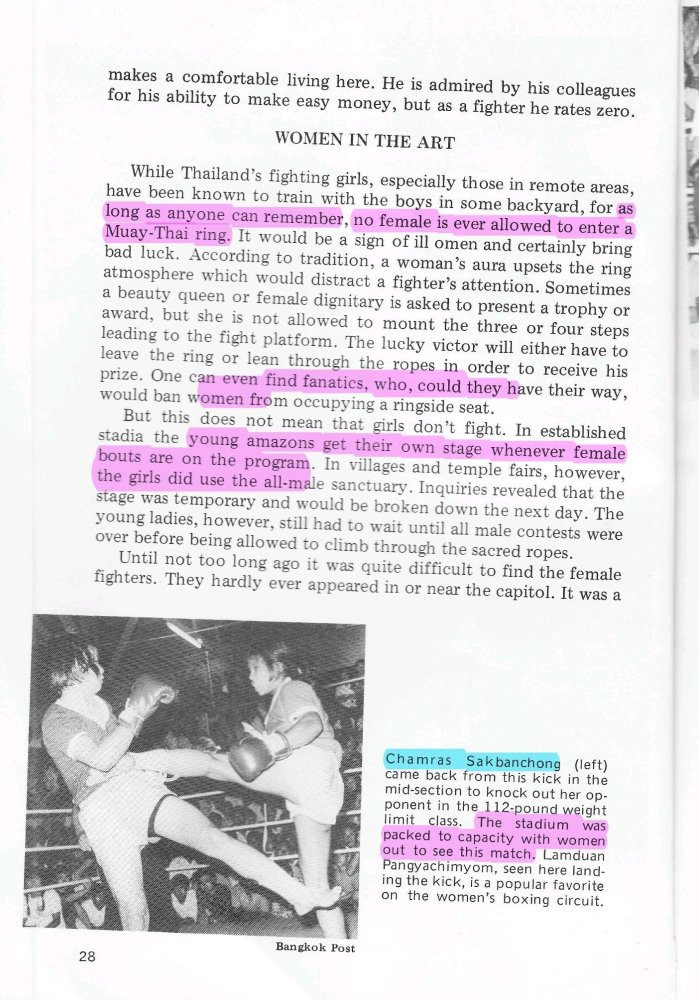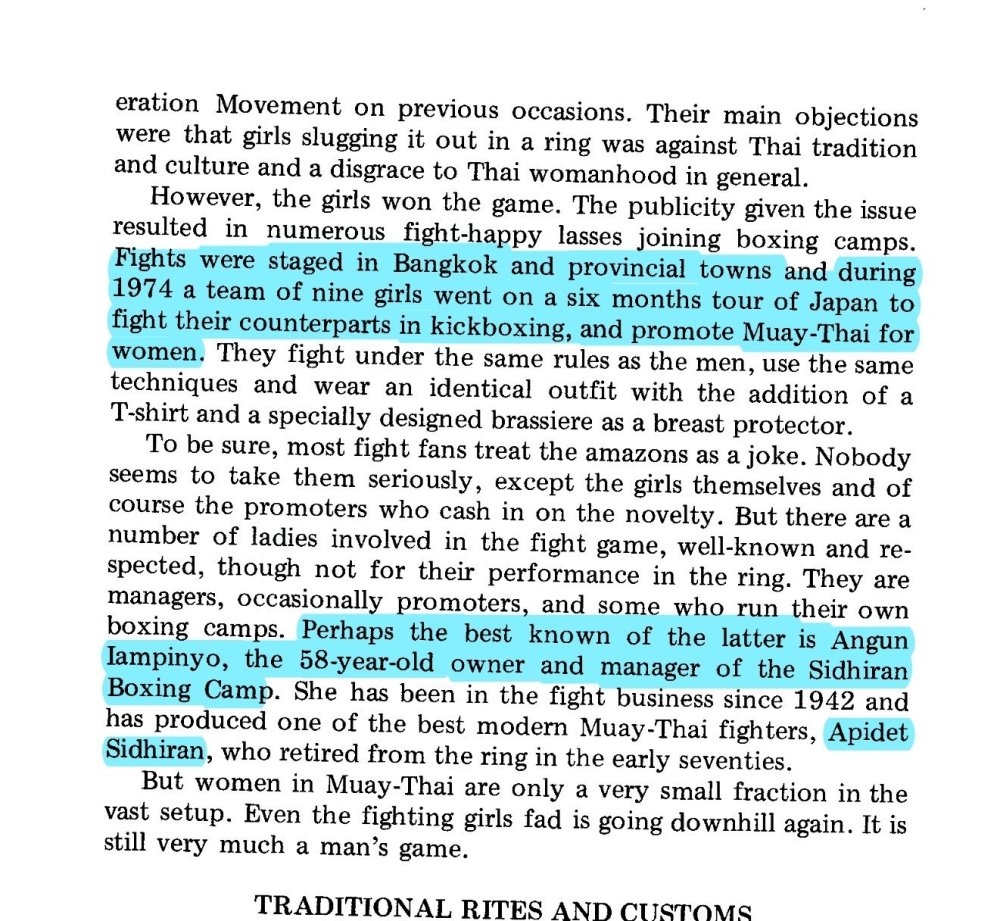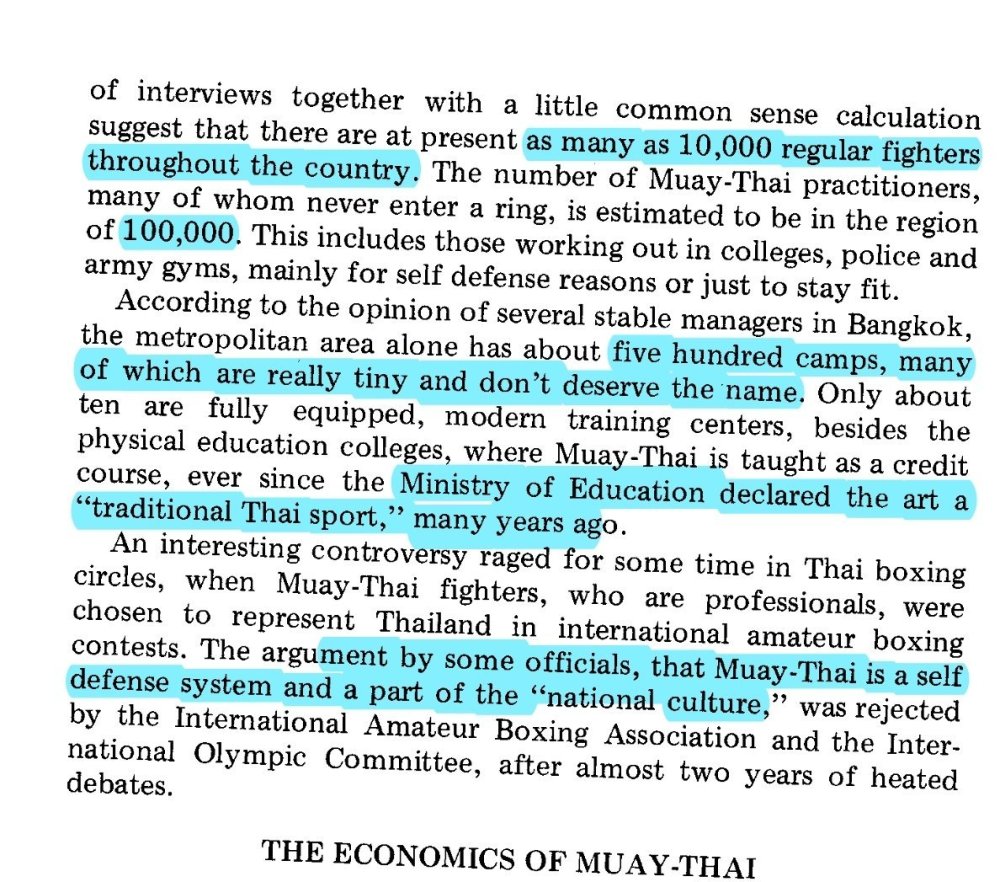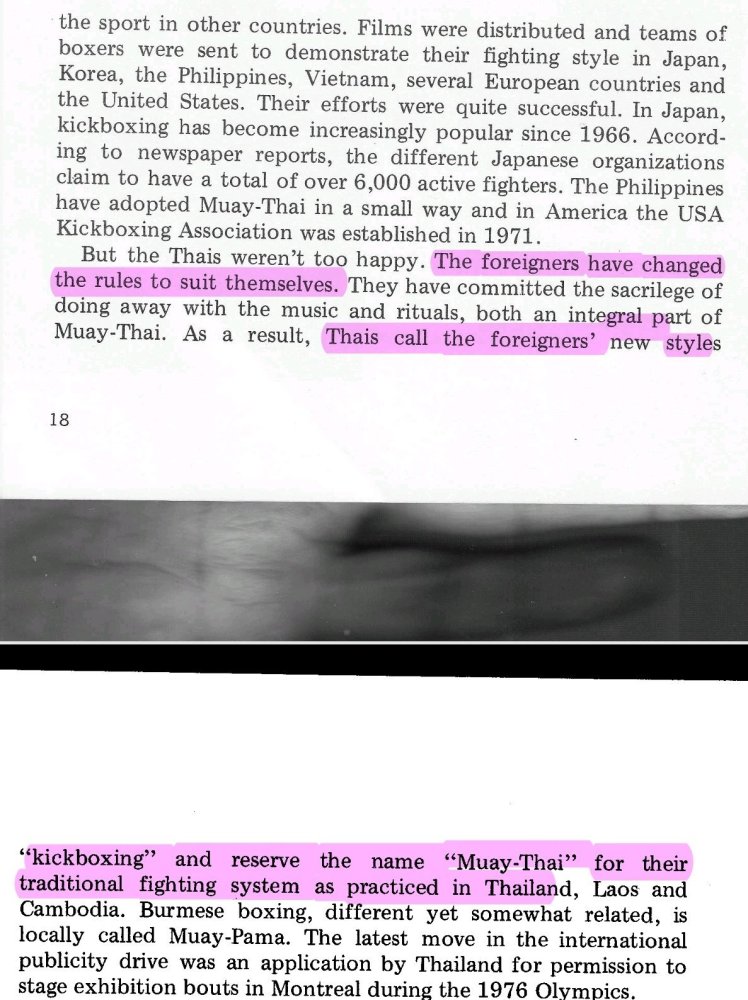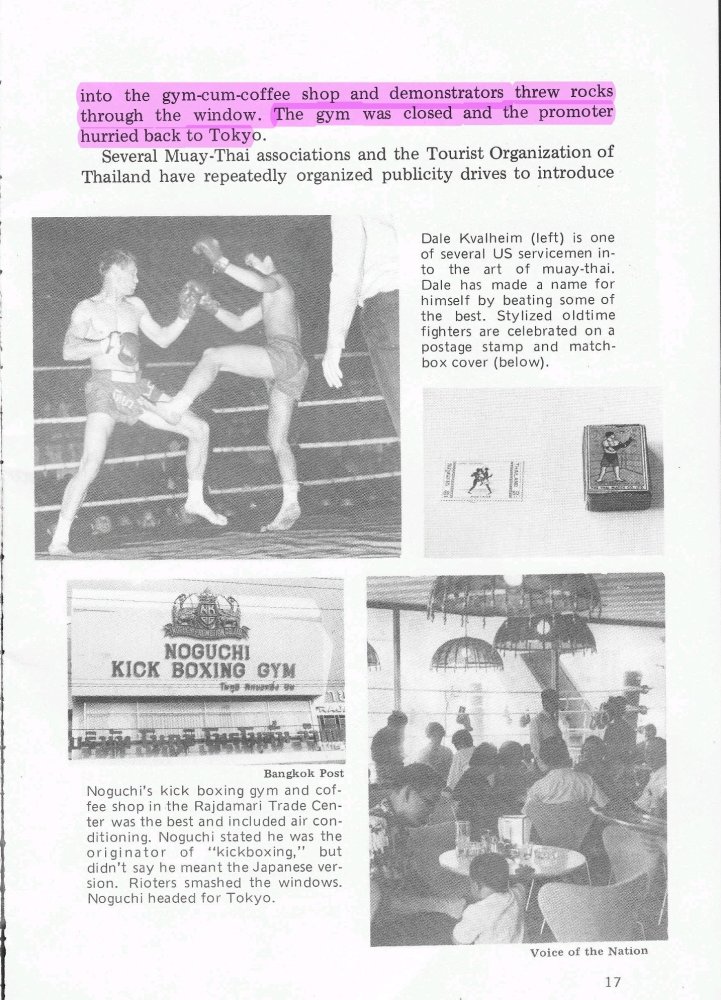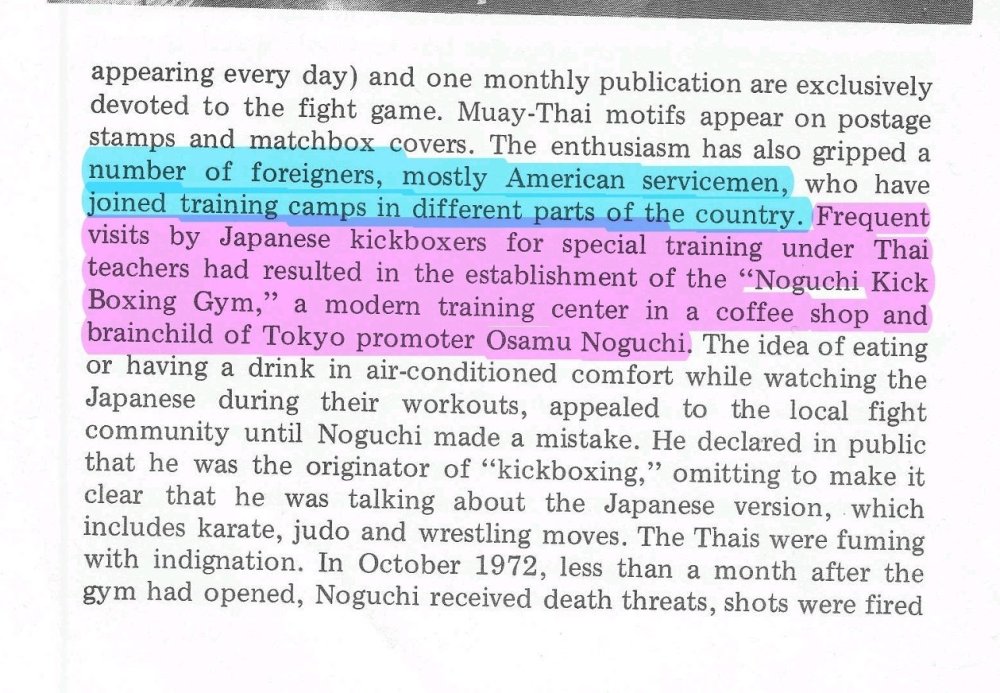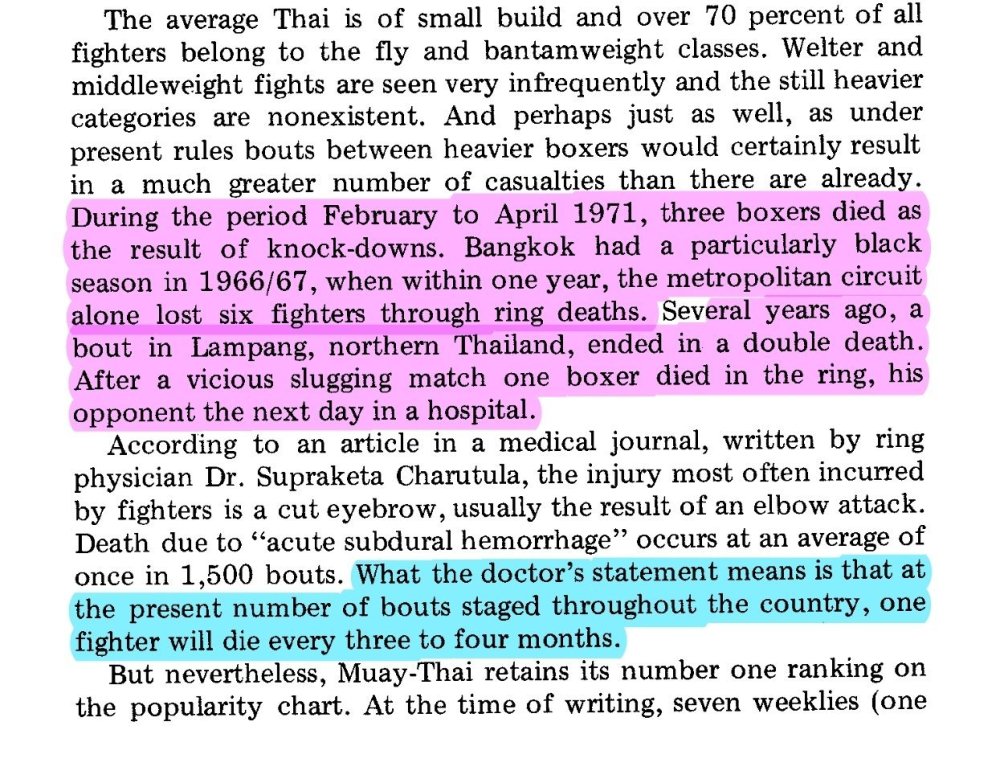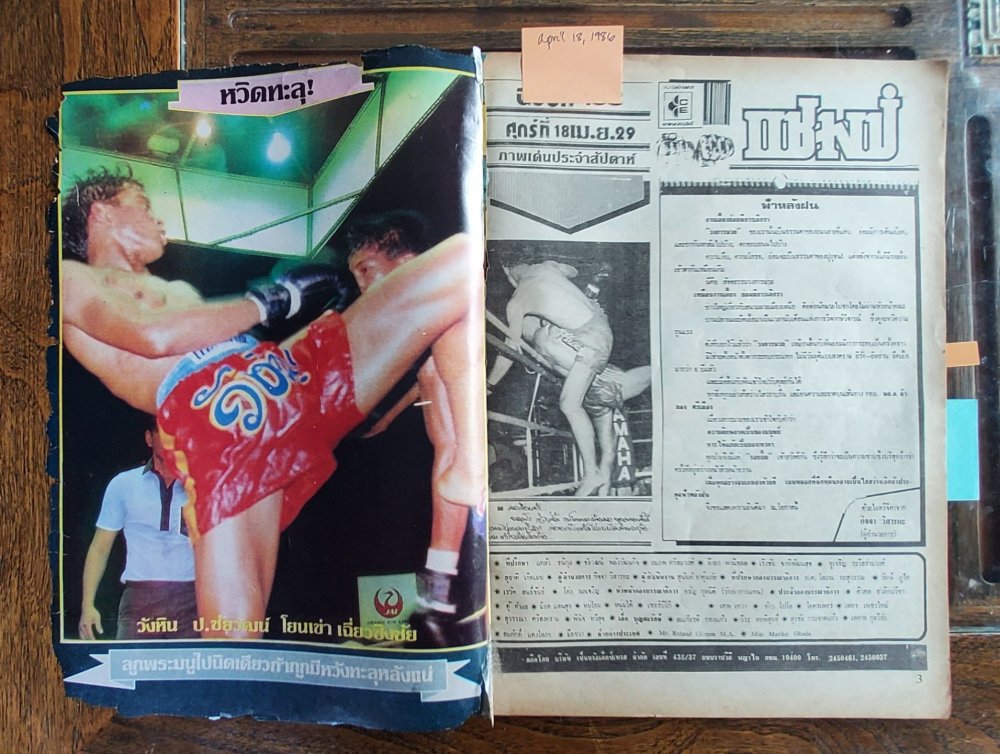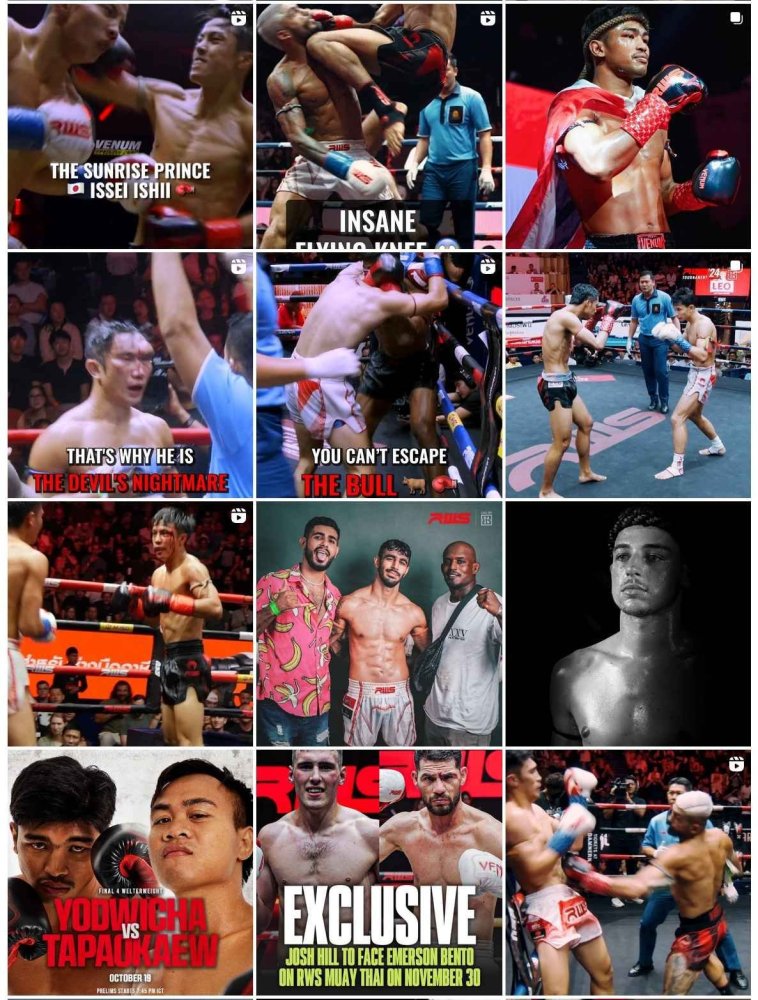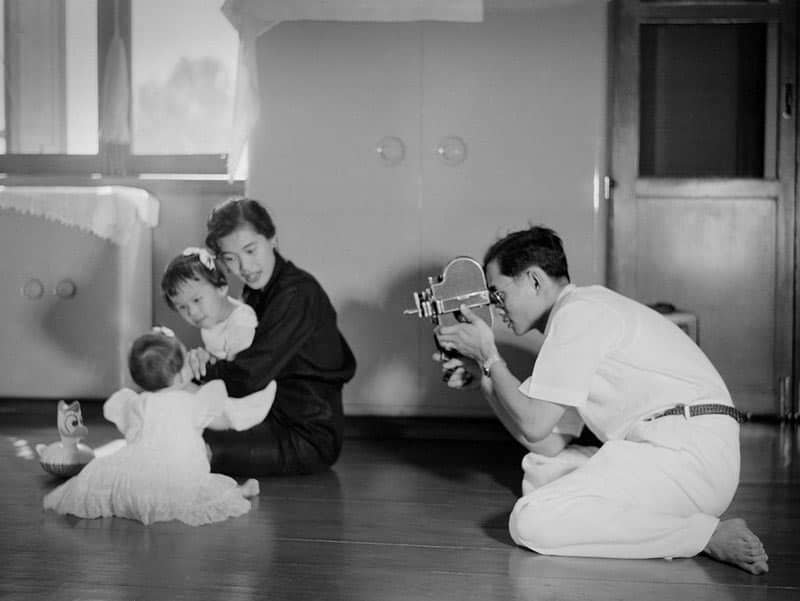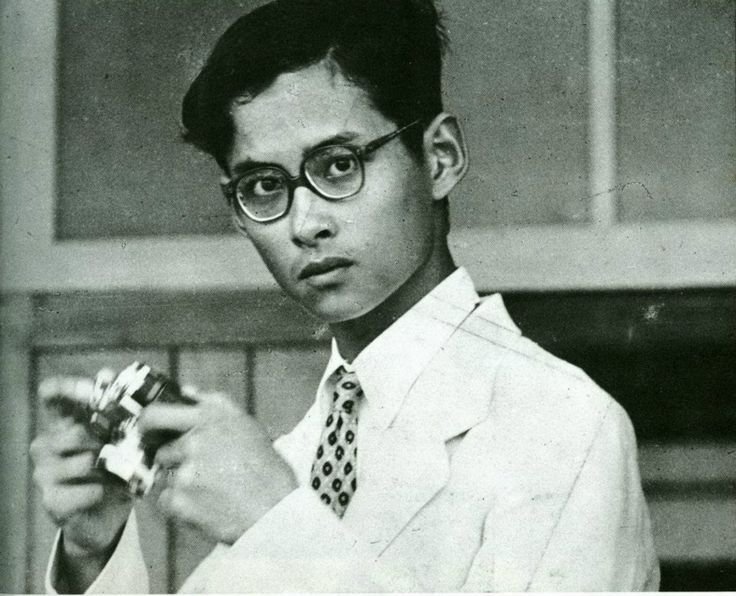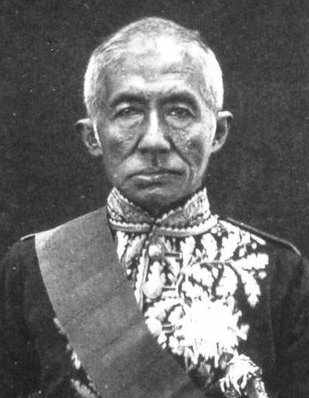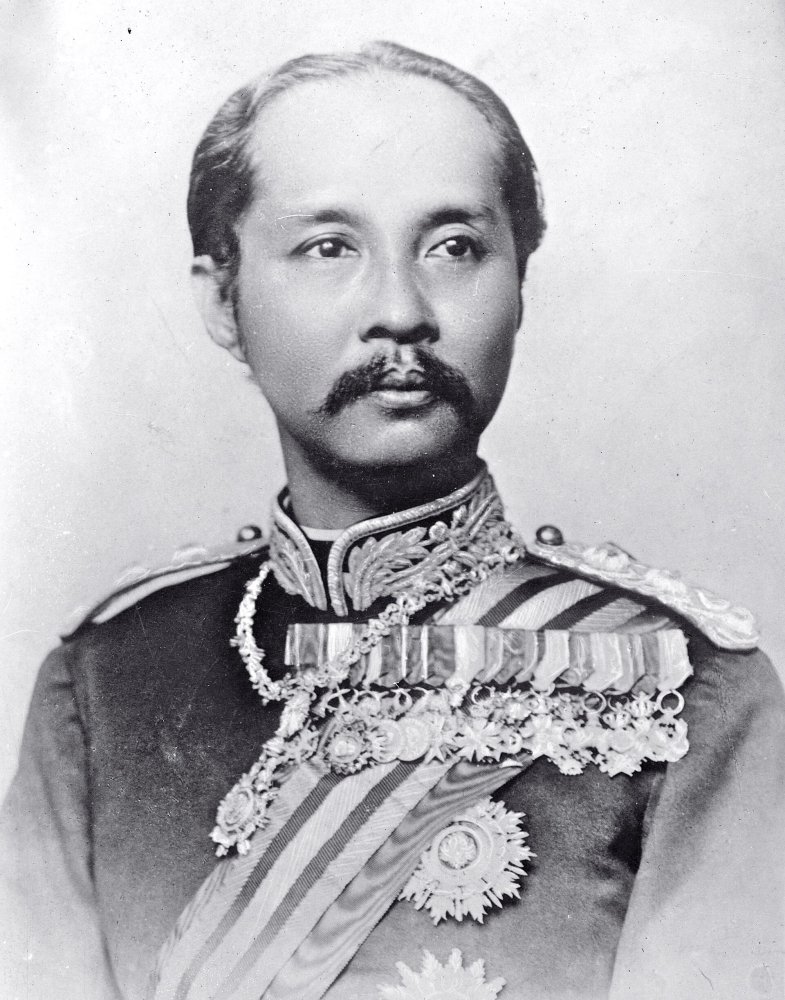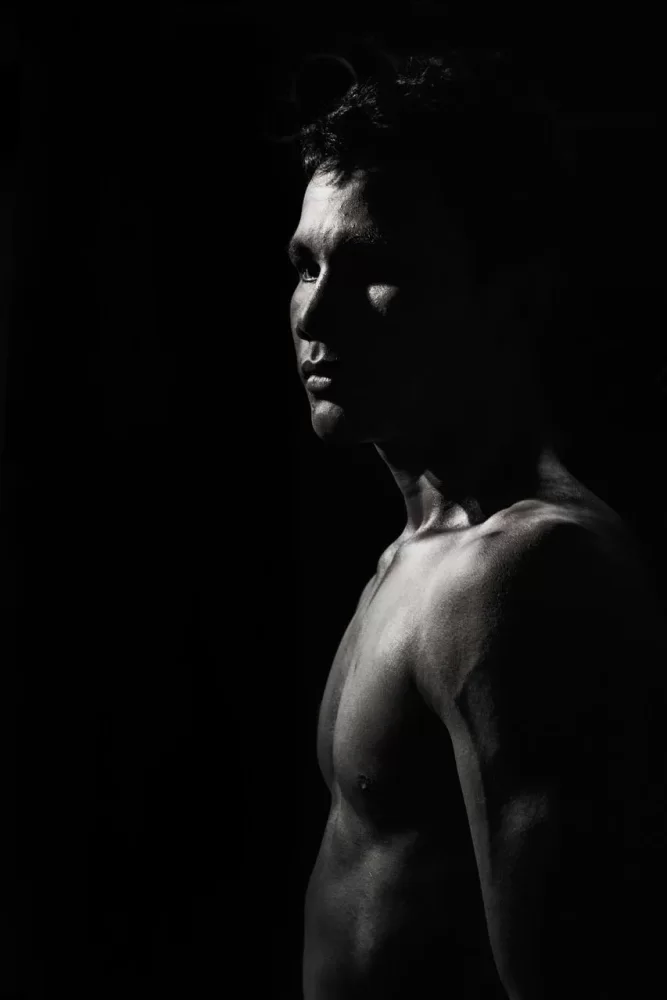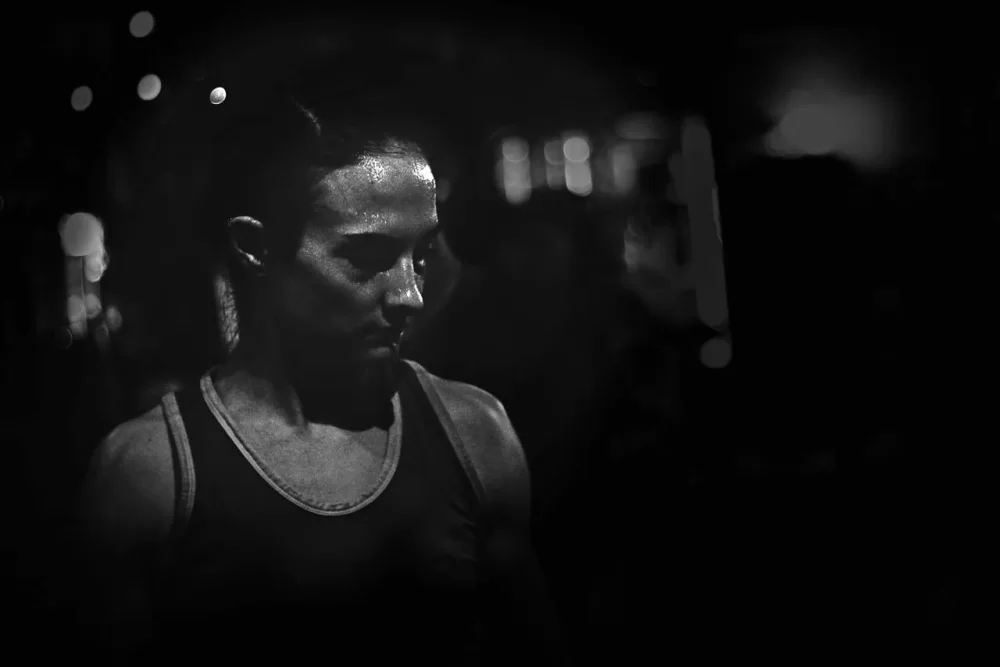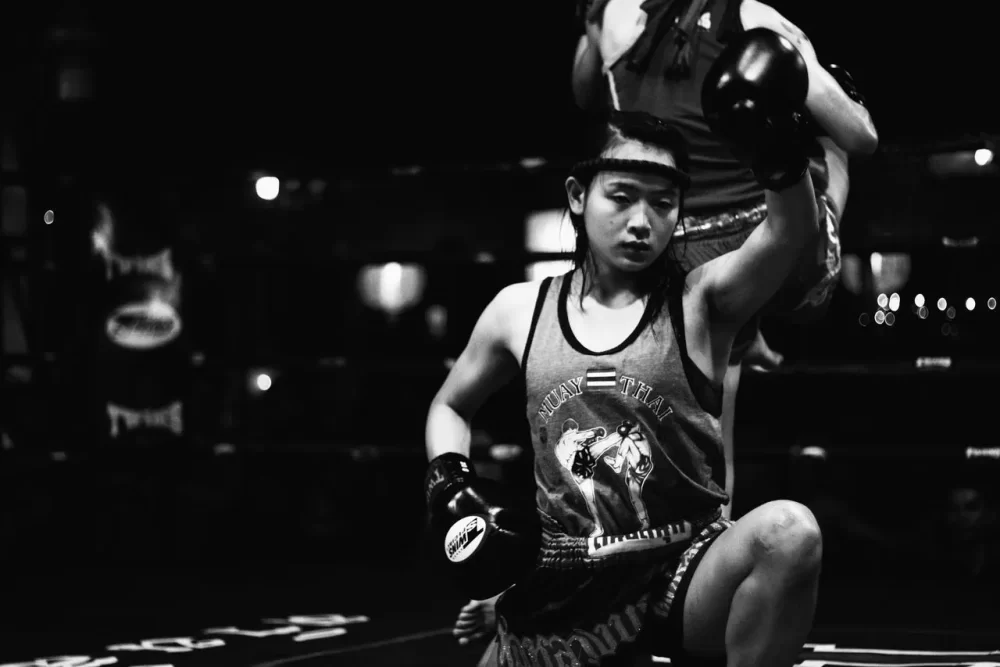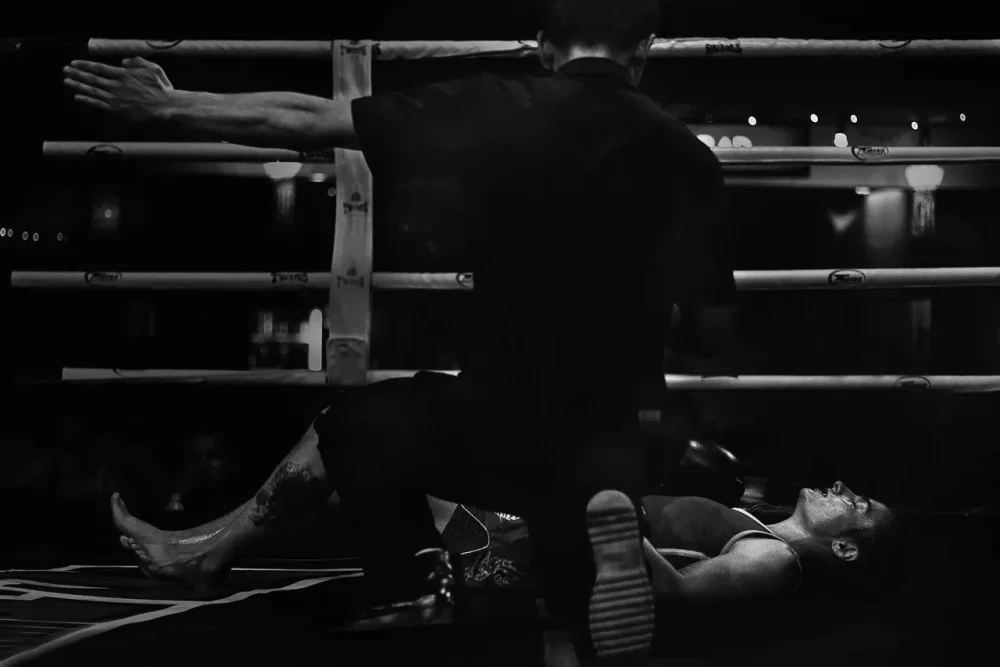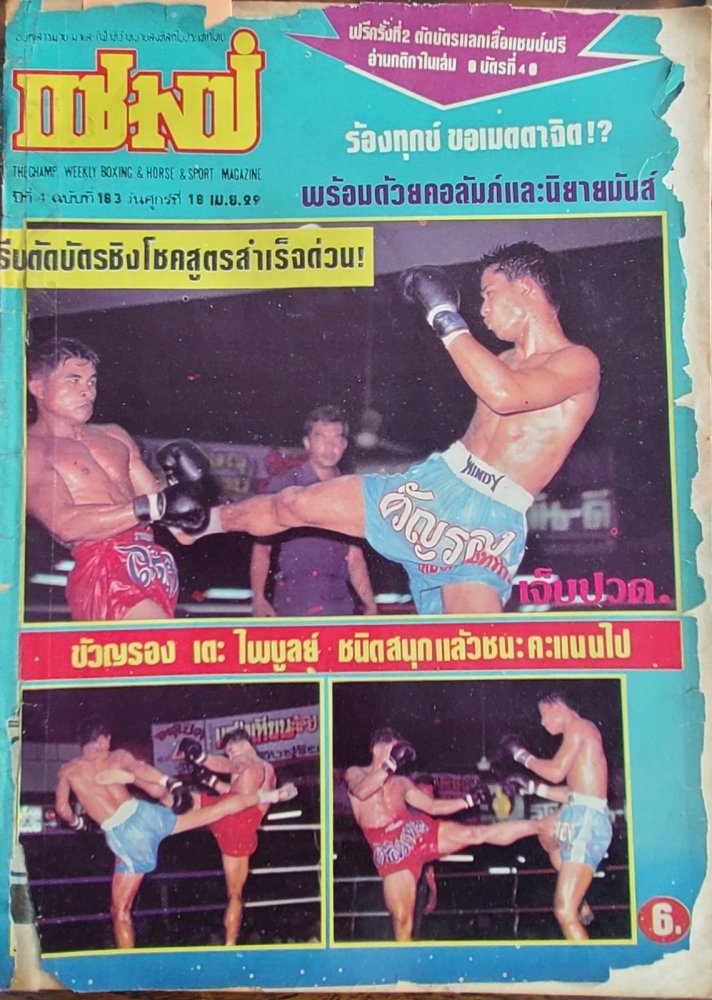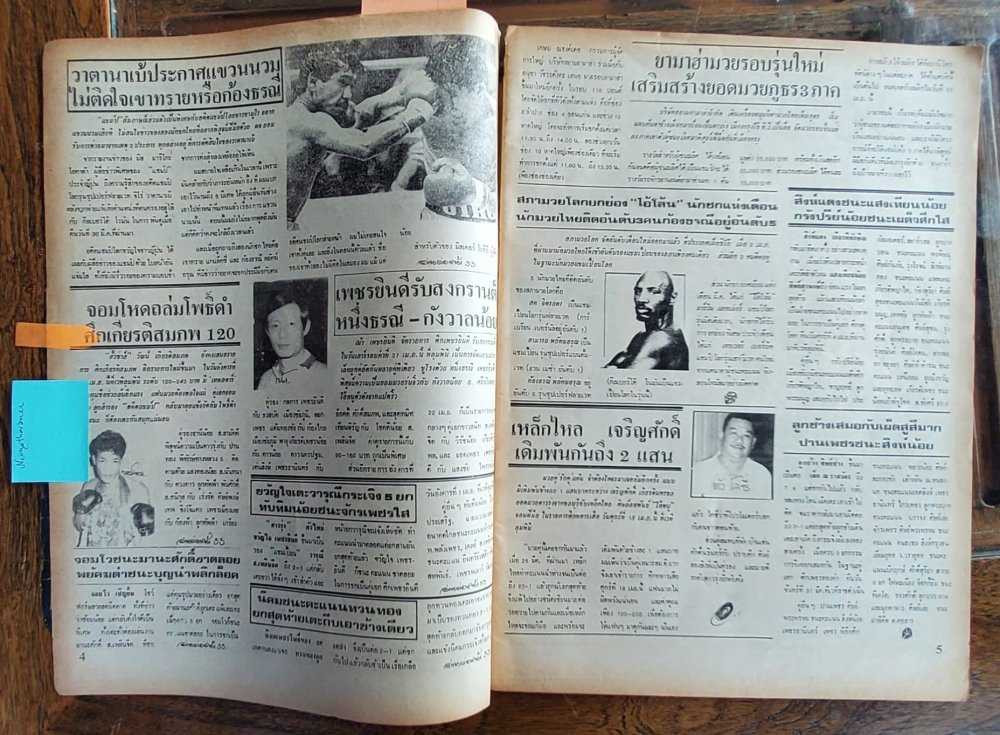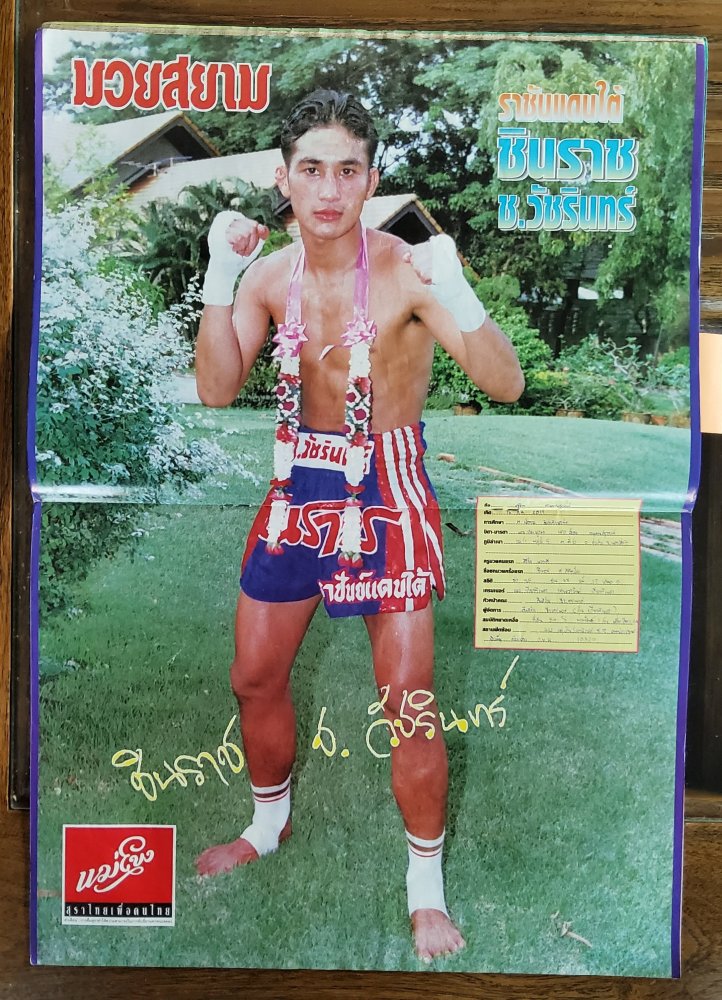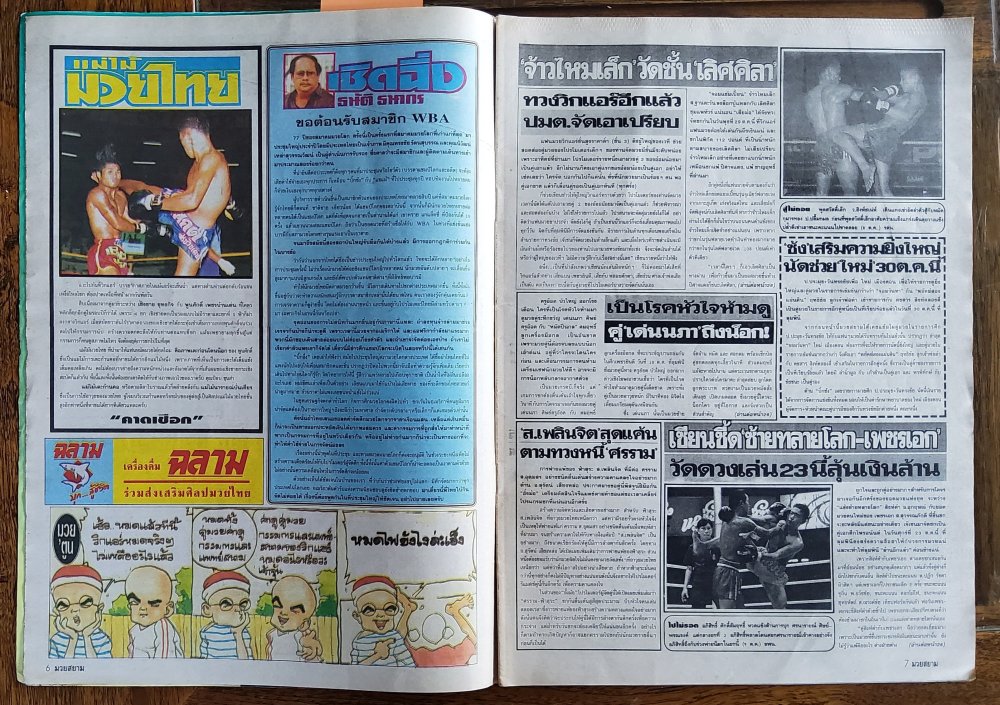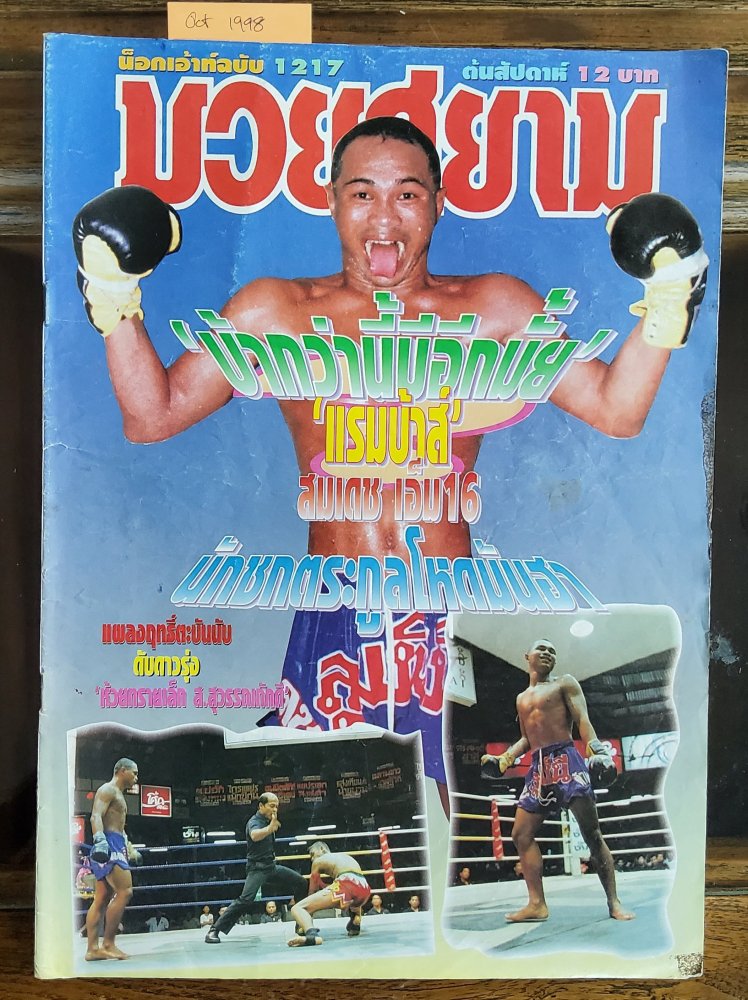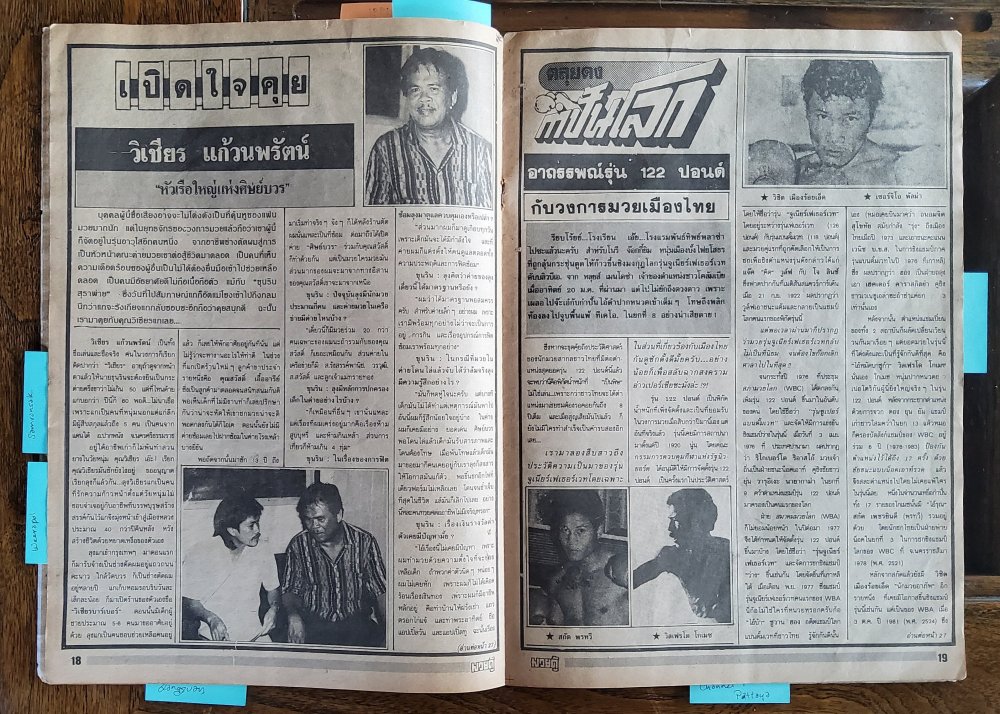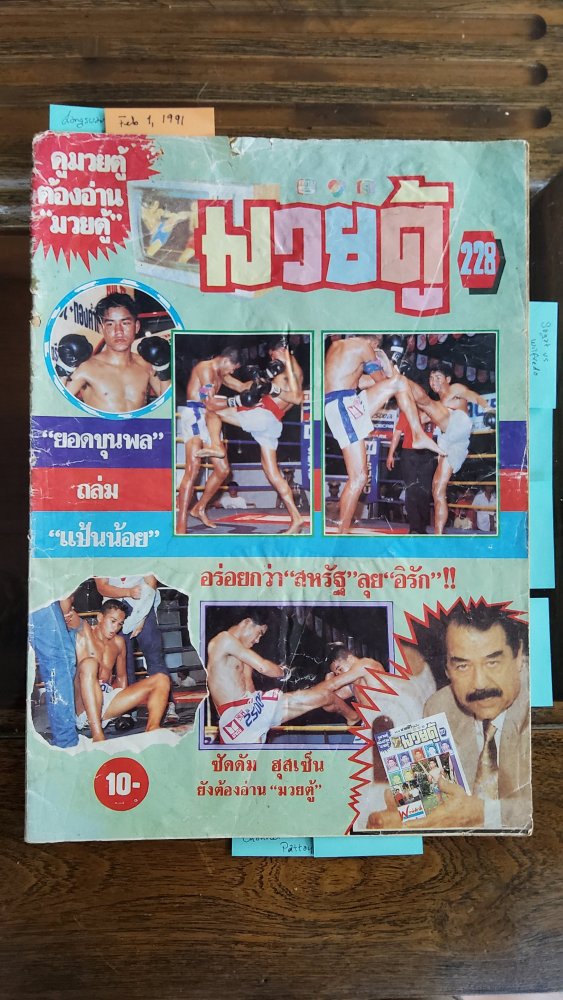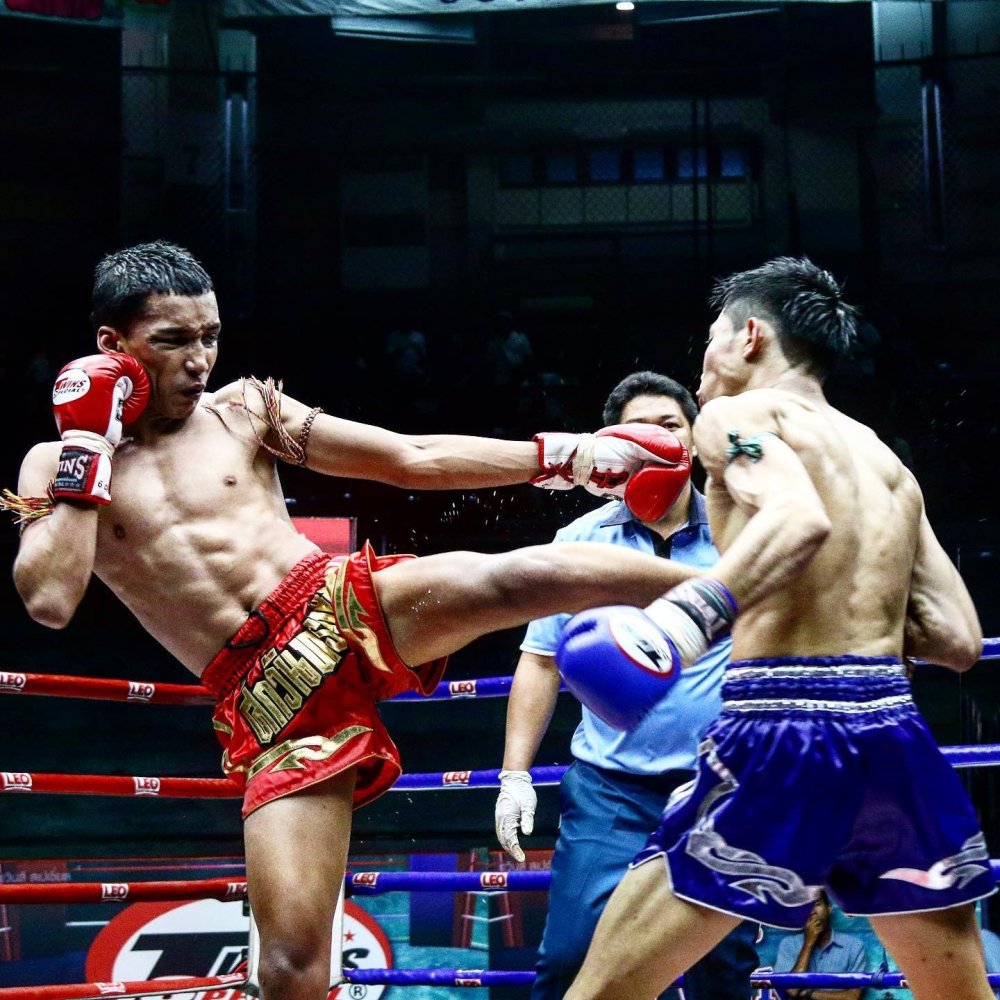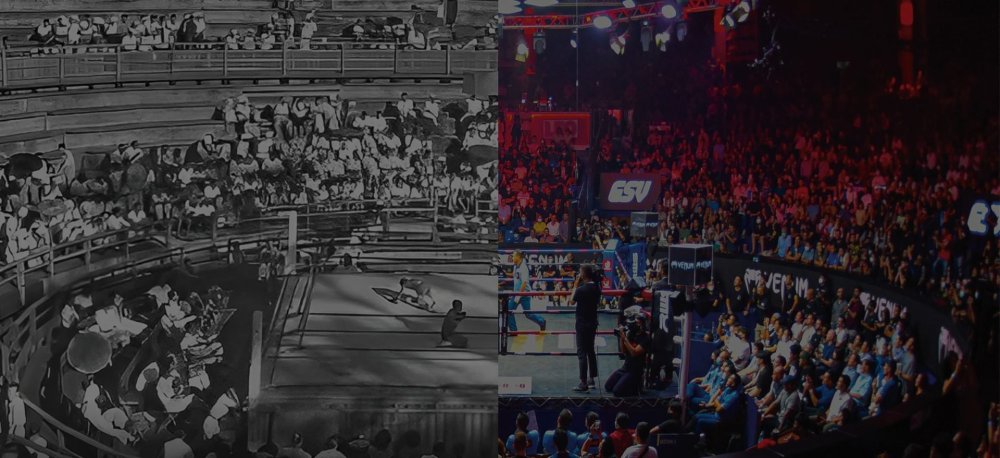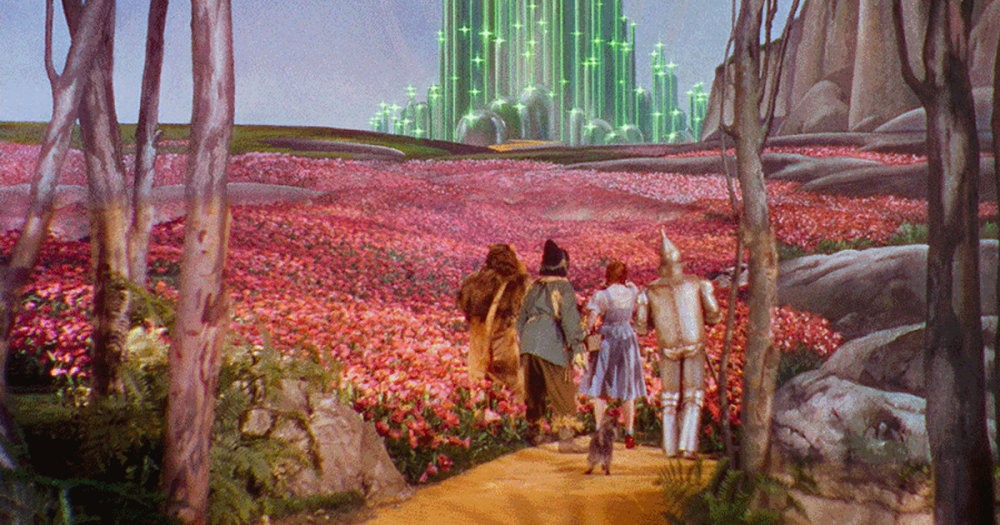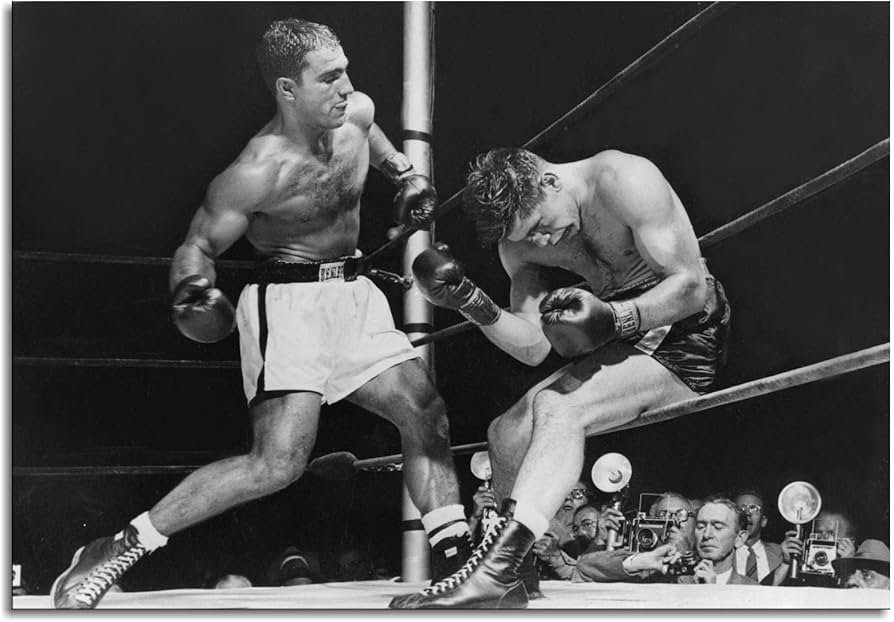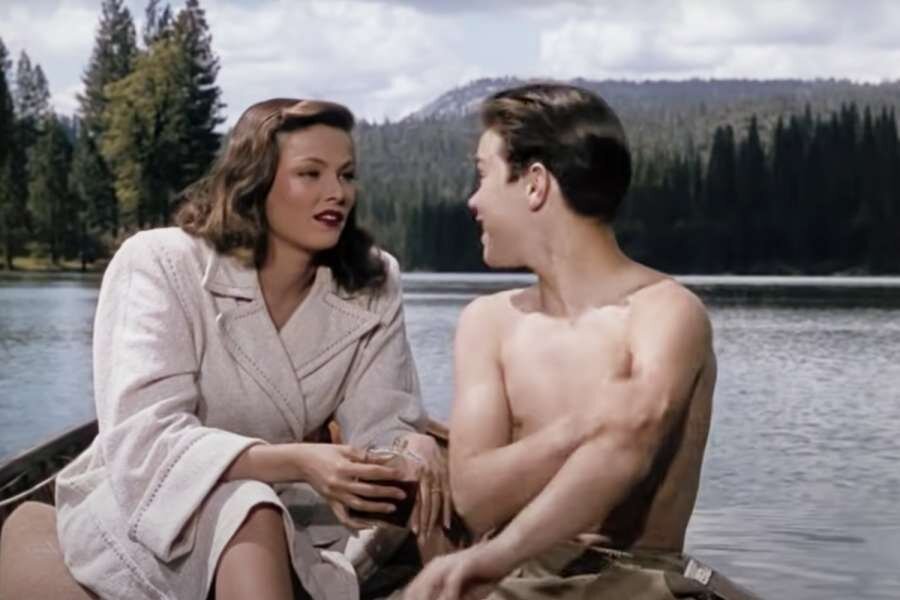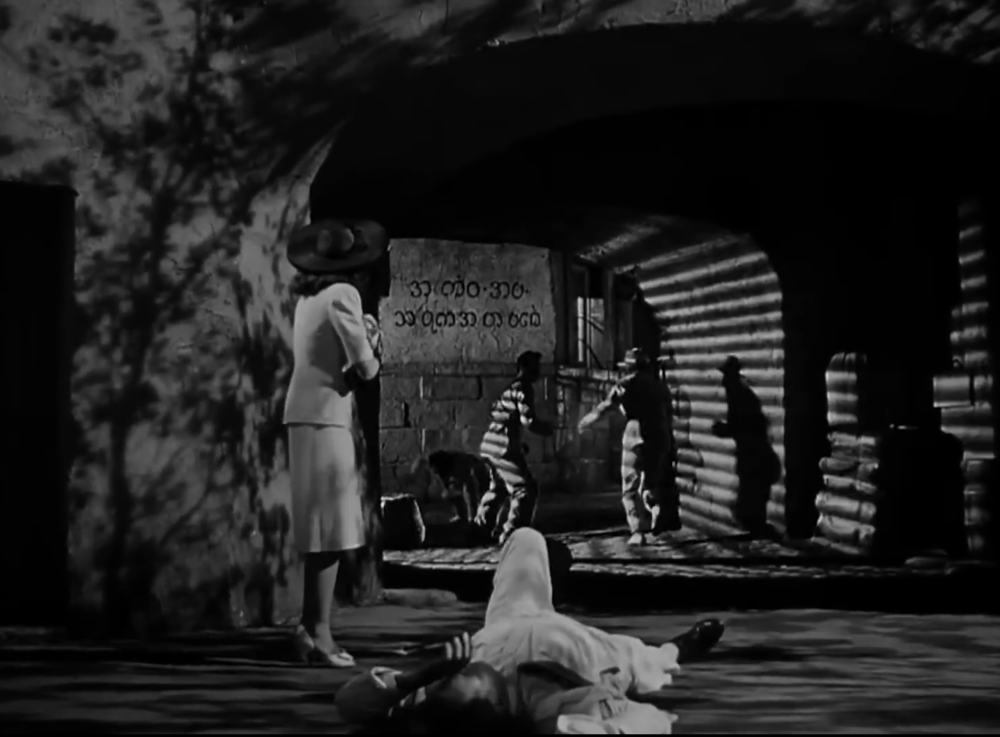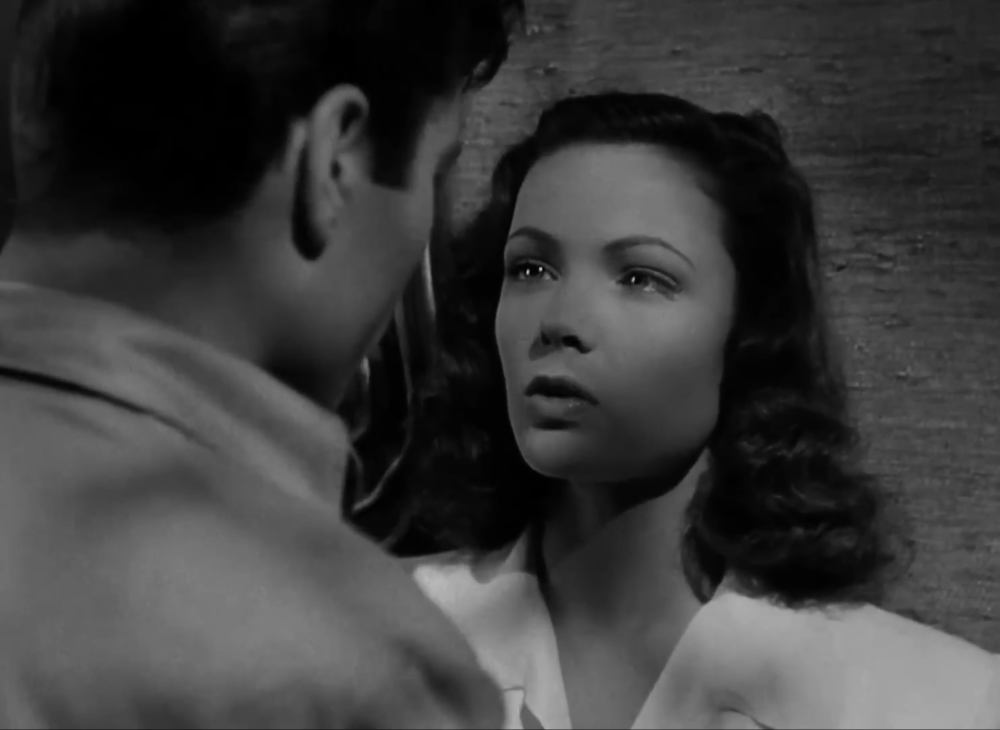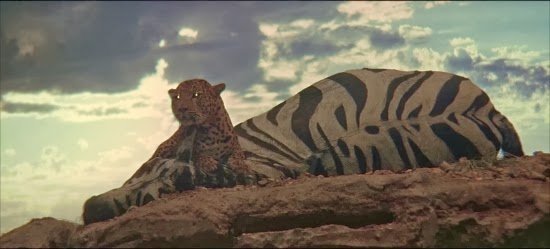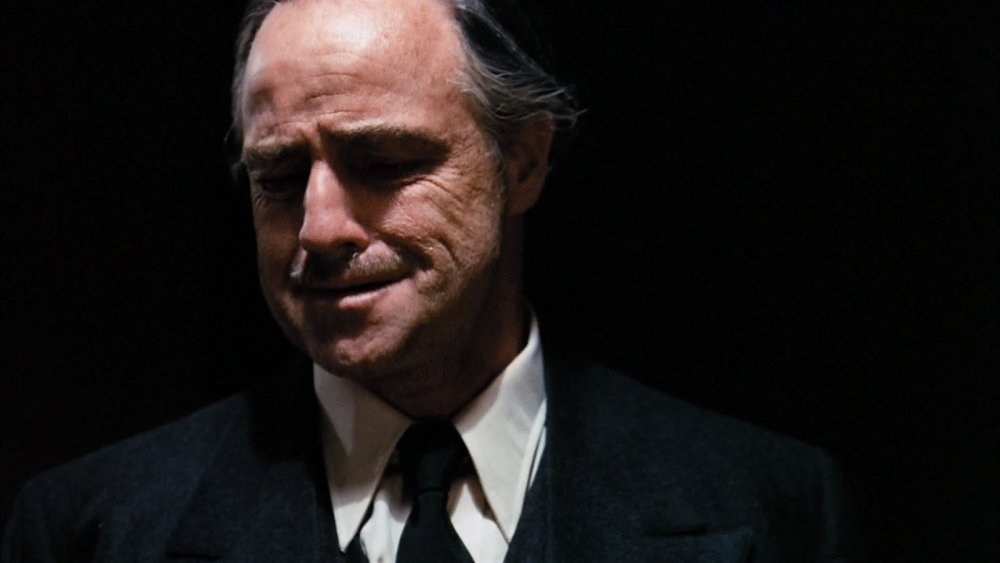-
Posts
2,264 -
Joined
-
Days Won
499
Everything posted by Kevin von Duuglas-Ittu
-
On the other hand, as Rajadamnern stadium's RWS promotion seeks to accommodate itself in ruleset to Japanese fighters, Western fighters, and their audiences, they to their credit also have pushed hard toward preserving the distinctly Thai cultural heritage and meanings of Muay Thai, distinguishing itself from ONE (at Lumpinee) which sought to remove almost all Wai Kru and Ram Muay. ONE was pressured by legal action to change how they treated the traditional pre-dance. RWS on the other hand actually put a mandatory Wai Kru / Ram Muay into the contract, and even imposes a 20% purse penalty if you don't perform one. A fighter will have to actually learn one, if they don't have one. This is quite remarkable, aligning RWS with preservation efforts.
-
The Noguchi Family, Kickboxing and Thailand 1962 the Japanese Boxer Kyu Noguchi fights the famed Thai Pone Kingpetch for his world title...but loses (video above) - Osama is 28. 1972 Kyu's brother Osamu Noguchi, after being banned from promoting boxing due to fight fixing, invents Kickboxing, and opens a high-end Muay Thai gym (and cafe) in Bangkok. But he is run out of town by rioters (photo below). - Osamu is 38. 2024 - A Japanese Kickboxer with only one Muay Thai fight on his record attempts to defend his Rajadamnern Muay Thai title, having never fought in Thailand before, under modified rules to help foreign Kickboxing styles, and entertain foreign crowds. Now the Noguchi vision of hi-so, upper class Kickboxing in Bangkok has taken hold of the sport in its Entertainment versions, and in the shifting popularity of the sport among the wealthy in the Capital. In about 60 years the Noguchi family legacy has worked through a strange arc. Osama had not even thought of Kickboxing when his brother lost to Pone Kingpetch, but he had a vision which has proven very far ahead of his time. Speculatively. An interesting detail in Osamu's biography is that he was raised around night clubs in Shanghai run by his father (a former boxer of interesting, ultra-nationalist history), entertained by the legendary singer Dick Mine, who sang in a translated Western and popular style. Could these very early hybrid-culture experiences (up to maybe 12 years of age?) of classy entertainment, along with his father's Nationalism, have shaped his own vision of the sport much latter?
-
4 More Deep Black Portraits in the Series These photos, other than that of Chatchai, have more light than the those of Ajran Surat and Takrowlek, I'd like to keep the style very dark, but I'm just exploring now, and those of Dieselnoi, Karuhat and Kongtoranee are very beautiful. I'm not sure of where I'll go with this, if I want consistent lighting characteristics, or a landscape of differences between men. Chatchai Dieselnoi Kongtoranee Karuhat
-
This is inaccurate, as we have video evidence and first hand report that rope grabbing was permitted in the major Bangkok stadia, perhaps until the early 80's. It casts a bit of doubt perhaps on the author's other detailed descriptions? Edit in: here we go a little later. I don't know, it seemed common enough to be deployed as an actual tactic. Not sure where he source on official rules is. Even by 1990 all fighters didn't know rope grabbing was illegal.
-
This is hard to guess at. He wants to really push the hyper violence for his readers, and claims to have watched thousands of fights...often both covered in blood, and no progressive nature seems quite fantastic. A short while later he emphasizes knockouts, but not sure what the grammar is here? 8, 9, 10 knockouts per card? Or is he imitating a 10 count?
-
Women in Muay Thai I've read a lot of the history of women fighting in Thailand (there isn't a lot of it on record, but I've probably read everything in English) and this is one of the most substantive reports pre-2000s. There was rumor (reported in a documentary) that women actually briefly fought in a secondary ring in the 80s-1990s (?) at Lumpinee, but I've found no collaboration. This report below seems to be quite from afar (little in person awareness) and combined with varying degrees of sexism you might expect from an American serviceman in Thailand in the 70s. The story of the Ali vs Norton fight is interesting! (1973), but seems also dubious, or only partial in detail. There were, as far as I know, no National televised broadcasts until 1988, so I'm not sure where this was televised...or if it was on tape. And it seems pretty unlikely that someone would follow up the Ali v Norton fight with 5 female bouts (???). But, maybe there is some truth to it, maybe a taped broadcast on a local channel, someone trying to promote female fighting? Also, finally I have the source for the very sexist/racist comment I heard from a well known American Muay Thai coach whose female fighter beat a Thai female fighter, somewhat outrageously claiming that female Thai fighters were just in the ring to avoid prostitution. Well, I guess they read this book. Here though, it comes from a paternalistic Thai who is saying that fighting gives women an alternative to prostitution, trying to make an argument for the moral improvement of Muay Thai, an argument that is made for young male fighters as well (keeping them off drugs, or out of gangs). Who knows about the relevance of this polemical claim, but that fact that it traveled 30 years at least to the mouth of an American Muay Thai coach is disheartening, and just shows how exoticizing and demeaning the picture some Westerners keep of Thailand. Most interesting, perhaps in the broad brush, is the idea that female Muay Thai fighting was popular in local scenes, and that its National interest may have been something that came and went, possibly for decades and decades. But women have been fighting in Thailand, in rings, for over 200 years. It's a shame that so many do not credit them with their own National art and excellence. First recorded female fight 1809 First Photographed Female Muay Thai fight 1929
-
The First Japanese Kickboxing Invasion: Noguchi Gym 1972 This is just one of the most fascinating events in the history of the sport, the father of Japanese Kickboxing driven out of the country, and forced to close his very posh Bangkok Kickboxing/Muay Thai gym in 1972, under threats of violence. It seems that at least some Thais felt like he, or the Japanese were trying to steal Muay Thai from Thailand. At this point, I believe, Japanese Kickboxing already had imitated Muay Thai in Japan and even became a regularly televised show of great popularity. Anti-Japanese sentiments seems to be running high. Also so interesting just how fancy a place the gym was, with serious money behind it. I'm guessing this was maybe the first "hi-so" kind of gym in all of Thailand. What is so extraordinary about it all of course is that Lumpinee (and even Rajadamnern) stadia, the National Stadia, 50 years later have radically altered the rules of Muay Thai to more approximate Kickboxing, and steered promotional Muay Thai to the foreign fighter. Just a month or two ago a Japanese Kickboxer was defending the Rajadamnern title, in Rajadamnern, having never fought in Thailand itself. Noguchi was very far ahead of his time. In a small, but interesting family detail in Japanese vs Thai relations, Osamu's brother was the boxer Kyo Noguchi who fought the great Thai fighter Pone Kingpetch, Thailand's first World Boxing champion for his belt: "On May 30, 1962, Noguchi challenged Pone Kingpetch for the flyweight world championship, but Noguchi lost by unanimous decision."
-
The accuracy of the death numbers are hard to gauge. The author would like to present Muay Thai as exotic and dangerous, but there seems to be no likely falsification with 6 ring deaths in Bangkok in 1966. Perhaps rumor (10 years back). The doctor's numbers seem exaggerated, perhaps the first of upper class objection to low class barbarism...something that today shows itself in CTE concerns. But, perhaps Muay Thai in the late 60s was more deadly. It could be that the very small gloves (in photos they can look like oven mitts) contributed to this. In anecdotal support of possible deadliness the late Sirimongkol told us the story of how he accidentally killed a man when fighting as a teen in the provinces in the late 1960s, before he got to Bangkok, in this interview:
-
There is really no proven way - that I know of - to rush recovery from concussion, other than getting good sleep, chilling out on secondary jarrings, staying hydrated, eating well. You simply will not fully know how much you are being physically (or even mentally) affected, and you may be feeling the blues because of the vulnerability you experienced in being knocked out. These are not small things. My own thoughts from a distance would be to maybe start building up your training through shadowboxing. Have a whole hour in the Library on shadowboxing as taught by Yodkhunpon. This way you might develop a different feeling for your muay and development, something that isn't jarring you. Everyone is different, and you might still be affected by the concussion, symptoms which can include depression. Here is a long preview of the full MTL session, you can find the whole thing here.
- 1 reply
-
- 2
-

-
Thailand's Photography and King Bhumibol Adulyadej Rama IX The story of photography in Thailand, and its meaning, can probably not be told without the absolute figure of King Bhumibol who presented ideal masculinity to the nation for 7 decades. Iconic to him was his embrace of the camera and photography, in part a symbol of his modernity and internationalism, as he helped usher in the development of Thailand into a modern Nation starting in 1946 just as Rajadamnern Stadium had been completed. I don't know enough about the aesthetics of the culture, and photography's place within it to follow the impact he had on photographic styles, but many, many Thai men picked up the camera and became at least amateur photographers following his example. (Master K, Sylvie's first Thai kru in his 70s, an ex-pat in America then, was a photographer in the mode of the King's image.) I'm not even sure if or how his own photographs were received (if they became public, if they influenced Thai styles). But, the mostly black and white photographs of him with his camera is surely powerful anchors in the aesthetics of past masculinity, and may play into some capacity to see black and white photography as meaningful and beautifying. edit in: here is an exhibition of HM King Bhumibol's photographs put on 6 years ago. The modernizing King HM Mongkut Rama IV (reign 1851-1868) was apparently the first Thai/Siamese monarch to read photography favorably. "Photography came to Thailand during the reign of King Rama 3 but, in that time people still believed that to mold the figure or take a picture of oneself will shorten his or her life. No one interested in this thing until the reign of King Rama 4..." H.S.H Princess Poonpismai Diskul Then HM King Chulalongkorn Rama V “...I had sent you six cameras, one for you, One for Ying Klang, one for Ying Noi, one for Erb, one for Earn and one for Sadab...” A letter of King Rama 5 to H.R.H. Krom Praya Dumrongrajanuphab Photography was very popular among female royal members in the inner court. Many royalties could take photograph skillfully such as HRH Princess OraprabandhRambai and H.R.H. Princess Adisaya Suriyabha. Chao Chom Erb and Chao Chom Earn were praised for their photography technique. They also could develop the pictures by themselves. more on the history of photography and Thai royalty
-
Very Dark Muay Thai Photography By Thais I'm also not purely directly influenced by Western aesthetics in my quest to capture Muay Thai. More than 10 years ago a Thai Chiangmai University student photographed Sylvie and her fight in an extremely dark, beautiful fine art way. We went to his gallery opening for the photos, and among them is as beautiful a fight photograph I've ever seen, and probably my favorite fight photo - which we titled Resurrection, of Sylvie regardless of photographer. this is just one of the great Muay Thai photos, as far as I'm concerned. This last shot is a portrait of the fighter Neung, all of the photos within that Film Noir style. This Thai photography student, Maestoso Top, no doubt unconsciously influenced my own possibilities of seeing Muay Thai in black and white, as this was before I had begun shooting, and well before I even realized how negatively coded black and white photographs could be. Chiang Mai University students tend to be affluent, and he's clearly working from a fine art sensibility which draws on classic cinema, but this is the artistic expression of a young Thai photographer, how they saw local Muay Thai fighting and the sport itself in 2013. We posted about the opening here.
-
Parallel Aesthetics In the West: 1980s Mike Tyson In showing the way in which dynamic color photography in magazines in boxing can co-exist in American representations, along with fine art black and white photography, here are photographs of Mike Tyson in 1986 (Sports Illustrated, inside pages) and in 1988 by the fine art photographer Albert Watson. These are in the same years as the early Muay Thai magazines filled with newsprint black and whites, behind color covers at the top of this post. The image styles, depicting the exploits of an urban kid (above training in the Catskills), Mike becoming the youngest Heavyweight world champion in history do not conflict. He is simultaneously embraced by a big, glossing color National Magazine, and also raised up as a subject of fine art black and white, expressing a classical beauty.
-
This thread was inspired by the opportunity think about my new experiment with Deep Black stylistics in Muay Thai portraiture, and much of what followed was my reflection on likely influences, things at play in own own aesthetic choices and the basic techniques I'm using in capture. I want to understand more richly what I'm doing, but also to see why it works, because the images are somewhat startling to me, more than a sum of their parts. Something is happening within them that I can only describe as my sensation that "the camera sees". It sees things that are there, but are often just flitting, as dim reflections of powerful truths. As I edit portraits dimension of personality and character constantly are morphing in varying signatures. In this case, I'm just very, very surprised, recognizing on the faces something I feel in them when in their presence, but something impossible to put words to...but the thread is also about my struggle with black and white photography in Thailand, and feeling my way through mixed ambitions in representing the art. And, these particularly styled photographs, due to being so very dark, and the possible difficulties in their reception, make those long waiting concerns come to the surface even more. They are part of this photographic style. They cannot be separated from them, and in this way address the ways in which I believe that black and white photography (at least to the West) opens doors of rich value, an honoring of a sport and art that is not their own, which points us back into our own history, our own traditions, our own past...but also, Thailand's Muay Thai, because of its Buddhism, cuts through several Western problematics, especially those concerning our relationship to violence, the more reckless affects involving loss of control, and how that relates to entertainment values, and social values, and masculinity itself. And for me, some of this truth is found in the eyes.
-
The Reading of Color In the History of the Sport In particular to Muay Thai, these shots of a 1986 Muay Thai magazine help illustrate some of why black and white photographs are not well regarded. 1986 is when the Golden Age really started pumping. The economy was booming and Bangkok full of burgeoning growth. Peoples poured in from the provinces to find work in the surging modernity, and many became gambling fans in the National Stadium, cheering on fighters from their provinces. The provinces were shining on the big national stage, with their fighting heros at Rajadamnern and Lumpinee. This was an extraordinary time in Thailand's history, and the meaningfulness of Muay Thai as a symbol for the nation, but also in terms of regional identities. These new urban fans bought these magazines, they were the primary mode of following the Capital sport, as National broadcast television did not yet exist. But, you can see the quite stark contrast between the expensively printed cover in color, and the newsprint images inside. - Sylvie collects and studies old Muay Thai magazines, these are from her collection, below showing the isolated presence of color in magazines and its relationship to newsprint through the Golden Age of the sport and slightly beyond. 1986 In fact you happen to have a picture of Boxing's Marin Hagler and a small piece on him there. Images are blown out and full of contrast, but there just is no comparison to the cover colors. 1991 This cover is a little faded, it would have been more brilliant. In 1991, perhaps the peak of the Golden Age, you have color covers and backs, but the newsprint inside remained as this, many of the images quite dark. 1998 by 1998, with the Golden Age principally over for several years, some color pages are in the inside the magazine (above), including a large color centerfold (below), and the black and white pages have improved print. (below) a typical spread: Color as Progress The story of the sport as it relates to the growth of Thailand as a prosperous Nation, growing in economic power, aesthetically involves climbing out of black and white images towards bright, colorful vibrancy. Black and white in the sport includes the limits of international development, and moving the sport into popping color in many ways signals its arrival on the World standard. This advertising combined image of Rajadamern as an open-aired stadium, half-full in the 1940s, contrasted with the hyper-saturated (full of tourists) shows that color is coded as. And black and white newsprint in weekly magazines is contrasted with big pop color fight photos of today, photos that fill social media streams, and are standard-setting of the aesthetic of a sport that has left its black and white days, and joined the World of Color. above, Rajadamern fight photo The men I am photographing have lived through this transition. When they were in their fighting days they lived the contrast between newsprint and covers, and watched color and bright clarity slowly grant visible aesthetic (affluence) dignity to the fighters who came after them...until today the Age of endless color and filter on phones. Layered among the broad-spread aspects of color and skin-tone judgements in the culture, the way in which the Capital sets the political and cultural standard, and communicates itself through media, is also this very particular history of color photography within the sport, as it relates to the Golden Age and the signification of progress...an important value on Thailand. In some ways American cinema (and its parallel in photography), because of the proliferation of images throughout the 20th century, established a different relationship to color. You have the spectacular Wizard of Oz (1939), and the color Film Noir Leave Her To Heaven (1945) in Technicolor. but you have truly beautiful, striking boxing black and white photography in the 1950s. As America boomed post World War 2, it wasn't color that became the signature of its prosperity, as least not in such a distinctive, signature way. With that prosperity arose much of Hollywood Golden Age of black and white greatness. above, a beautiful black and white photograph, in a style and degree of accomplishment which was not unusual for the era. This quality of image is not in the common lore of Thailand's Muay Thai, and so cannot reflect forward on today's black and white. But for Western eyes they can recognize the aesthetic (even more so the case due to Raging Bull). And as modernity progressed in the late 1950s and 1960s, and color came with it as its signature, it appears that black and white imagery retained its own dignity and aesthetic legacy in the West, something that in future decades would anchor itself in nostalgia for the values of the past. There is in the American psyche a kind of dual, schizophrenic aesthetic, one which maintains black and white legacy as a distinct signal of values one wishes to retain or refind, ways of relating to each other that have been washed away thinned by Capitalism's and Commercialism's march. Because Thailand as a developing country did not live through this same history in terms of color representation and its depiction of meaningful values aligned with its own economic growth, especially in the provinces, necessarily color will be coded differently in photography, and represent different things. In the West we can feel that we have lost important values as we have flown headlong into a futurism, promising infinite growth and liberty. As a point of comparison the first national televised broadcast in the US was in 1951, in Thailand I believe it was 1988. Even the cohesive sharing of a single stream of images differences in its history, putting all media in the two cultures in alternate contexts that do not map onto each other. In America, probably due to its accelerated place within image technology, there is ever in media aesthetics an appeal to what is vintage, as possibly lost. A nostalgia for the appearance of past technical forms that are seen to hold disappearing values. This plays out not only in terms of color and black and white, but in cinema and photography sometimes in terms of focus as well, as can been seen in Roger Deakins' innovative use of lenses in The Assassination of Jessie James by the Coward Robert Ford (2007, below), to approximate the fading images of early century photography, making us feel like we are looking through an eye of the past. There suspect that there is something of this at play in my use of focus in Deep Black portraits as well, not only working in the register of black and white, light and darkness, but also along an index of focus and clarity, itself historically coded.
-
Eyelight and Aesthetics of Darkness this frame, above, is just incredible for me. It lasts just a split second Above are three screen caps from the Gene Tierney Noir China Girl (1942), cinematography by the great Lee Garmes, who likes to shoot very, very dark. He was reportedly booted off Gone With the Wind and replaced for shooting too dark. Lee Garmes was a forerunner of the risky & stylistic dark photography Gordon Willis would achieve in the Godfather (1972), a film of the underworld lower class violence and its masculinity. In the first cap above can see the very extreme eyelight from Gene Tierney which I mentioned here (eyelight). That frame is only there for a second as shadows race over her face in the car, dropping her into almost pure black. You can see the clip linked just above. In the top cap you can also see a more classic Noir eyelight, but Garmes is holding the light back. Her face is softly lit and holds that soft luminosity of twilight, but we are seeing in the dark. And in the 3rd cap you can feel the entire spectrum of dark vs light. In the background you have the hard, classic Noir "blinders" shadows playing in distinct bars where the violence is happening, but in the foreground the shadows are soft against the wall, with something of that day-for-night, moonlight feeling, and the luminous figures really stand forth, without much light. Some of the best Noir aesthetics are not necessarily those of its trademark hard light, but rather its see-in-the-dark moments. Hard light contrasts often set up that experience of trying to look very closely. Eyelight used to pick up something extraordinary in a figure was taken up by Kubrick in 2001: A Space Odyssey (1968), and in Ridely Scott's Blade Runner (1982). the lowest imaged above has fascinated audiences, as faint eyelight it suggests that Dekkerd too was a replicant, matching Rachel. The use of eyelight in China Girl, as seen in the car at top I think is what finally spurred me to work towards this new vision. I suspect the Deep Black style works through the combination of eyelight, selective focus, and the darkness which pervades in the softer Noir versions of lighting. In this sense its distinctly modern, but also working from classic cinematic emotional styles of lighting, which hold a deeper meaning. I did not set out to create extreme eyelight, and I don't even think I have, but it inspired me to simplify lighting, and to think of composition more throughly through darkness. Gordon Willis uses hard light to put the eyes in darkness (Godfather, 1972) The Reading of Eyes in the Dark The style of reading light through darkness of course goes back to Rembrandt's renown sense of light, and probably much further than that. Rembrandt painted with a darkness he really could push quite far, as can be seen in this self-portrait. The eye-strain to read the eyes amid a soft darknes makes them come alive in a why no directed luminosity could create. Rembrandt: Self-Portrait Self-Portrait, oil on panel by Rembrandt, c. 1628 Athena of the Flashing Eyes, Glaukopis (ϒλανκώπις) The aural luminosity of eyes may go back several thousand years in the Western canon, back to "flash-eyed" Athena, goddess of war. Read this piece on the adventures of translating glaukopis from Homer's Iliad. The owl, a creature of twilight, capable of reflecting light in its eyes, sacredly associated with Athena.
Footer title
This content can be configured within your theme settings in your ACP. You can add any HTML including images, paragraphs and lists.
Footer title
This content can be configured within your theme settings in your ACP. You can add any HTML including images, paragraphs and lists.
Footer title
This content can be configured within your theme settings in your ACP. You can add any HTML including images, paragraphs and lists.
